That famous line was written by screenwriter Curt Siodmak.
This is the story of two brothers Curt (Kurt) and Robert Siodmak and their impact on both the American and German motion picture industries from the 1940's into the 1960's, According to Robert their last name is pronounced See-odd-mack.
Robert was born in Dresden, Germany August 8, 1900 and Curt two years later on August 10, 1902. Before either brother became involved in the German Cinema. Robert worked first as a banker and on the side became a director on the legitimate German stage. While brother Curt obtained a Doctorate in Mathematics, but started to write novels and became a newspaper reporter.
THE GERMAN CINEMA
In 1925 Robert, who had also started writing novels, was hired by director Curtis Bernhardt as a film editor and scenarist. In 1926 Kurt and another reporter, his future wife from 1931 until his death 42 years later, Henreitta Erna Baroness de Perrot, were sent to interview director Fritz Lang. Lang agreed to their request, but only if they both became extras on a motion picture he was shooting titled "Metropolis".
In 1927 Robert received his first on screen credit as the film editor on "Bezwinger der 1000 Gefahren (The Island of 1000 Dangers)". The following year he wrote the titles for the silent film "Die Durchgangerin (The Passage Women)" known in the United States as "The Runaway Girl". After Robert worked on two more silent films the two brothers came together on a motion picture.

"Menschen an Sontag (People On Sunday)" was a documentary style feature based upon the reporting of Kurt Siodmak. It was co-directed by brother Robert. The other director was Edgar G. Ulmer, (1934's "The Black Cat" starring Karloff and Lugosi and the classic 1945 film noir "Detour" starring Tom Neal and Ann Savage). The screenplay was by Billy Wilder using the name Billie Wilder (1950's "Sunset Boulevard", 1957's "The Spirit of St. Louis" and "Witness for the Prosecution"and 1959's "Some Like It Hot").
The motion picture was co-directed by Fred Zinemann (1952's "High Noon" and the following years "From Here to Eternity"). Zinemann, as did Kurt Siodmak, received no on screen credit as a director.
The co-producer of this motion picture with Ulmer was Robert and Curt's cousin Seymour Nebenzal (Co-produced "M" with Fritz Lang, 1933's "Das Testament des Dr. Mabuse", also with Lang, and the overlooked American remake in 1951 of "M"),
This once forgotten 1930 motion picture had some of the future names of the American movie industry within it. All of the names I mentioned, including Fritz Lang, would take their families and flee Germany. As Adolph Hitler came to power, because each one of them was Jewish.
Returning to Robert in Germany. He began working for the State Run film company "Universum Film A.G." founded by World War One German General Erich Ludendorff.

The company was supported by Hitler's Third Reich. Just before the premier of "Brennendes Geheimnis (Burning Secret)", on March 21, 1933, Robert Siodmak took his wife Bertha Odenheimer Siodmak and fled Nazi Germany. He had been given information that the Gestapo was about to arrest him upon orders from Propaganda Minister Joseph Goebbels. The two fled to Paris, France, where Robert reunited with his friend Billy Wilder working in the French film industry.
In 1933 Kurt Siodmak wrote a German science fiction novel "F.P. 1 antwortet nicht (F.P.1 Doesn't Respond)" about the building of an airstrip in the middle of the Atlantic Ocean. The novel was based upon his screenplay for the first of three feature films of that title. At the time the film version was being shot. Dubbing different languages over the original images hadn't been considered. It was the practice, the World over, to shoot a motion picture with the proper language cast for release in Foreign markets. As an example you have Todd Browning's 1931 "Dracula" starring Bela Lugosi shot during the day at Universal Studios. While director George Melford shot the Spanish language version on the same sets, at night, starring Carlos Villarias.
The original cast of the German version of "F.P.1 Doesn't Respond" featured Hans Albers as "Flieger Ellissen" and Peter Lorre as "Bildreporter Johnny".

The French language version "I.F.1 Ne Repond Plus" starred Charles Boyer as "Ellissen" and Pierre Plerade as "Le Photographe".
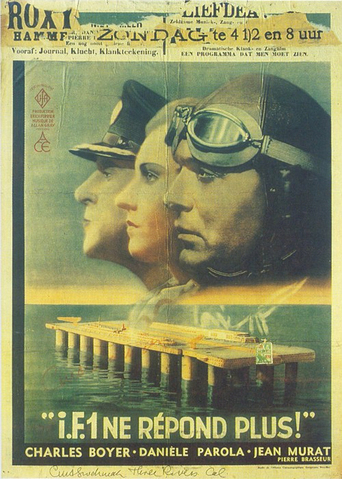
Then there was the English language version starring German English speaking actor Conrad Veidt as "Major Ellissen". Veidt will always be to known to horror film affectionado's as "Cesare the somnambulist" from the 1920 "The Cabinet of Dr. Caligari". Donald Calthrop was "Sunshine, the Photographer".

At this time Kurt heard the same talk coming from Joseph Goebbels and took his wife to England. So both brothers were out of Nazi Germany, but in different country's.
Two names have come up in this article that I have previously written about on my blog. The first was director Fritiz Lang and should my reader be interested. You can read my dual biographies on Fritz Lang and Leni Riefensthal. She made the Nazi Propaganda motion picture "Triumph of the Will" and the two part "Olympia". Which was filmed during the 1938 Berlin Olympic Games were Jesse Owens won Gold. That article is at:
http://www.bewaretheblog.com/2015/03/fritz-lang-and-leni-riefensthal-their.html
My other article is on Peter Lorre and many of his overlooked, or forgotten motion pictures. That article may be read at:
http://www.bewaretheblog.com/2017/11/peter-lorre-overlooked-or-forgotten.html
A note of history about Kurt and Robert's birth city of Dresden, Germany. Between February 13th and February 15, 1945. Allied forces fire bombed the city killing an estimated 35,000 to 135,000 people depending on whose article you read. The historic city was completely leveled.
As Kurt and Robert were both novelists. One of my favorite novels has its basis revolving around this event. That 1969 novel is Kurt Vonnegut's "Slaughterhouse Five".
A SHORT LOOK AT FRANCE AND ENGLAND
Robert Siodmak
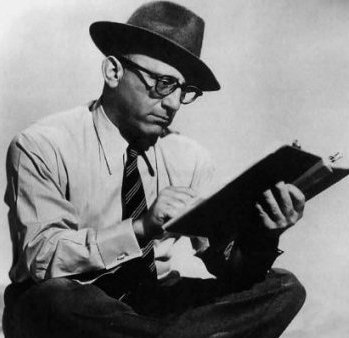
Curt Siodmak
In the opening sequence of the film. When the older of the two grave robbers discovers the Wolfbane in "Larry Talbot's" coffin. He then recites the poem from 1941's, "The Wolf Man":
Another interesting piece of trivia not related to Curt, but to "The Ghost of Frankenstein" angered Bela Lugosi. He was all set to create his own version of the "Frankenstein Monster", but director Roy William Neill told him he must walk exactly like his current co-star Lon Chaney ended the previous motion picture. Lugosi was stuck with the arms forward walk of the blind monster and this film pretty much made that walk associated forever with the creature.
The following Italian poster for "Frankenstein Meets the Wolf Man" translates into English as: "Frankenstein Against the Mankind Grey Wolf", or from another translation site as "Frankenstein Conquerors the Humanity Wolf". Anyone who understands Italian I would love to know how you read the Italian title for Curt Siodmak's screenplay.
+1.jpg)
Curt followed this picture with another typical World War 2 spy film for Republic Pictures called "The Purple V" that is not part of the three I want to mention. That second screenplay brought Curt Siodmak into the world of producer Val Lewton.
Released April 21, 1943 in New York City and directed by Jacques Tourneur "I Walked with a Zombie" still is spooky fun.
Francis Dee as Canadian nurse "Betsy Connell" tells in voice over how she once "Walked with a Zombie". The Zombie in this case is the wife of a plantation owner on a Caribbean Island very much like Haiti, if you've never seen any of the moody, low budget, films of Val Lewton. This film, thanks to Siodmak's intelligent screen play, the acting and direction by Tourneur, ("Cat People" and "Night of the Demon" aka: "Curse of the Demon"), will get you.

Val Lewton was an interesting producer. My article on his career can be read at:
http://www.bewaretheblog.com/2015/10/val-lewton-master-of-subtle-terror-and.html
I now come to the third feature film Curt made with Robert. Overall there are two camps about this film and it's either you like it, or you don't. Of all the Universal Studio's vampire pictures of the 1930's through the 1940's. This is my favorite. I would describe "SON OF DRACULA" as a Horror Film Noir with just a touch of 1920's German Expressionism.

As director Robert Siodmak had some input on those who would be working on this motion picture. The choices he made with producer Ford Beebe, (director on Buster Crabbe's "Flash Gordon" and "Buck Rodgers" serials), all went toward solid Horror movie backgrounds.


January 28, 1944 saw the release of director Robert Siodmak's "Phantom Lady". This film noir crime drama was about a secretary who is looking for the elusive women of the title. Believing she could prove her boss innocent of murder.
The motion picture starring Franchot Tone as "Jack Marlowe" and Ella Raines as "Carol 'Kansas' Richman" had three firsts. This was Robert Siodmak's first American Film Noir and the first motion picture produced by Joan Harrison. Joan Harrison was Universal Studio's first female executive and had been Alfred Hitchcock's screenplay writer for 1939's "Jamaica Inn", 1940's "Rebecca" and "Suspicion" and 1942's "Saboteur".
I previously mentioned Curt Siodmak's 1942 science fiction novel entitled "Donovan's Brain". It was about a scientist who keeps the brain of an evil multimillionaire alive and the brain starts to control him. This novel would be made into a feature film three times and a live television production. The first feature film, released April 12, 1944, was entitled "The Lady and the Monster". This version starred Vera Ralston as "Janice Farrell", Richard Arlen as "Dr Patrick Cory" and Erich von Stroheim as "Professor Franz Mueller".

In May 12, 1944 Robert found himself directing "Cobra Women". This adventure story is about a man who finds his kidnapped wife on a jungle island where her twin sister rules. The picture would be followed by his second American film noir starring Deanna Durbin and Gene Kelly "Christmas Holiday", The screenplay was based upon a W. Somerset Maugham story.
Robert's next picture "The Suspect" has a very unusual setting for any film noir. The film was set in 1902 in Edwardian London, England. It starred Charles Laughton and Ella Raines and was released on December 22, 1944.
Laughton's "Phillip Marshall" falls in love with Ella Raines' "Mary Gray" and murders his wife. So that he can be with "Mary" and then fate steps in. First in the form of a neighbor "Gilbert Simmons". Henry Daniell. "Simmons" has discovered "Phillip's" secret and starts to blackmail him, but what about Scotland Yard Inspector "Huxley", Stanley Ridges, who suspects there was a murder?
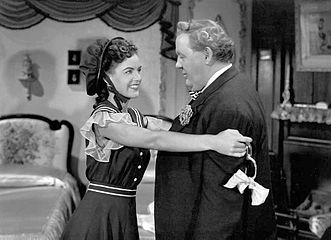
In 1943 Universal Studio's made the first Technicolor "Phantom of the Opera" and planned a sequel. In the original edit of the feature as the audience once again sees the buried "Phantom" and his mask. Looking closely that audience sees a slight movement of the debris that has fallen from the ceiling of the catacomb burying Claude Rains. A signal "The Phantom Lives!"
Boris Karloff portrayed "Dr. Friedrich Hohner" and from that original motion picture opera singer/actress Susana Foster was back as "Angela Klatt" not "Christine DuBois" of the previous film. The sets used were the exact one's seen the year before and were also used in the Lon Chaney, Sr. 1925 "Phantom of the Opera". Another signal Universal Studio had planned a sequel.
The story, if you read the credits, was based upon a play by Edward Locke from 1909. The only thing connected with that play in Curt Siodmak's screenplay was the title of the movie. Looking at the poster for the film Karloff had third billing and Foster first.
Edited out of the 1943 "Phantom of the Opera" was a scene between Claude Rains as "Erique Claudin/Phantom" and Nelson Eddy as "Anatole Garron" that confirmed "Christine" is "Claidin's" daughter. Which was a nice twist and explained some dialogue that didn't make sense.
Curt Siodmak just rewrote that 1943 screenplay with a change of names, relationships and location. You had Turhan Bey as "Franz Menser" the man in love with Susanna Foster instead of Nelson Eddy. Then you had Boris Karloff not as Foster's father, but a demented physician from for the Vienna Royal Theater. Who thinks "Angela's" voice is the same as the mistress he murdered ten years earlier. Now he wants to get Susana Foster's voice trained and for him only. Sounds like the "Phantom" and "Christine" to me.
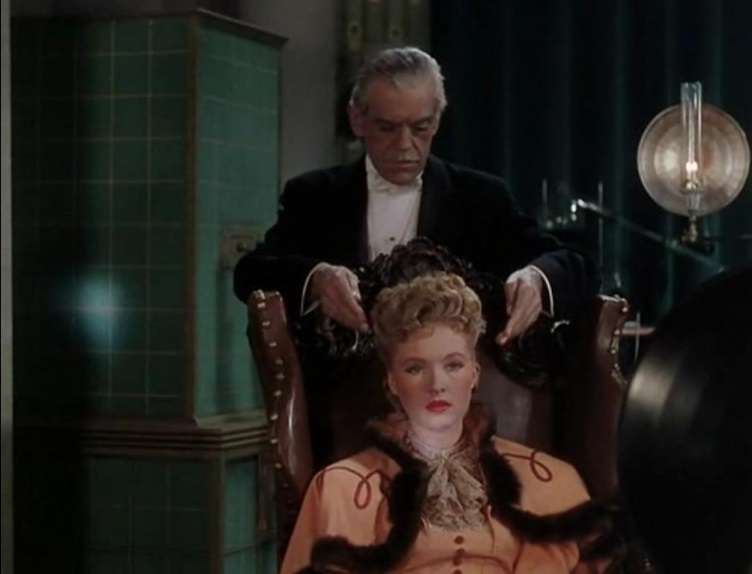

Universal wanted another entry for their "Frankenstein" franchise and asked Curt to come up with a story, if you had two monsters in the previous entry. Why not really go overboard and the result was "The House of Frankenstein" turned loose on America December 15, 1944.

This is my last mention of Curt Siodmak's connection to the "Frankenstein" series, but if my reader is interested in the films. I wrote an article comparing them to the British Hammer series that started in 1957. The article can be found at:
http://www.bewaretheblog.com/2015/02/universals-frankenstein-vs-hammers.html
1945 saw two forgotten movies for Curt and only one for Robert. 1946 was a completely different year for the Brothers.
Columbia Pictures wanted Curt to come up with a swashbuckling story for the studio. In 1934 United Artists made a classic production of Alexander Dumas' "The Count of Monte Christo" starring Robert Donat. Six years later the studio made a sequel entitled "The Son of Monte Christo" starring Lewis Hayward. So what did Curt come up with for the Columbia Picture? Why, obviously "The Return of Monte Christo" with Hayward now as the "Grandson" of the original Count.
However, it was a psychological horror tale, for Warner Brothers, that Curt Siodmak provided Peter Lorre with a classic role. Lorre portrayed "Hilary Cummings" one of a group of people at the home of a famed pianist who has stroke. Then confined to a wheelchair, falls, or was pushed down a high staircase.
When the hand of the pianist begins to murder those in the house. Is it real, or is it imagination? Curt's screenplay keeps the audience and the characters guessing until the final scenes. Robert Alda, father of Alan, was "Bruce Conrad". While Andrea King played the pianist's nurse "Julie Holden". Did she kill him for money?

Next Robert was about to direct his three most famous film noir's.
While Curt dealt with psychological horror. Brother Robert brought the audience a psychological film noir thriller entitled "The Spiral Staircase" on February 7, 1946. The motion picture starred Dorothy McGuire as "Helen" a mute companion for the bedridden "Mrs. Warren" portrayed by Ethel Barrymore. "B" Leading Man George Brent was "Professor Albert Warren" Barrymore's son.

There is a serial killer in early 1910 New England that murders disabled women. "Helen" appears to be the next victim. There is a second doctor in the story and he's "Dr. Parry" played by Kent Smith. "Parry" has figured out the cause of "Helen's" lost of voice and can he make her remember before it's too late, or is he the killer?

Also in the cast were Rhonda Fleming as "Blanche" and Elsa Lanchester as "Mrs. Oats". Below Robert Siodmak works on a scene with Dorothy McGuire.

In 1927 Ernest Hemmingway wrote a short story entitled "The Killers". On August 28, 1946 Robert Siodmak's version of the story came to the big screen in an Oscar norminated film noir feature.

The on screen screenplay credit went to writer Anthony Veiler. As was the practice as Veiler was the head of Universal Studio's writing department. However, in reality "The Killers" was written by director/screenplay writer John Huston and future Oscar winning director/screenplay writer Richard Brooks.
The motion picture was the first appearance of actor Burt Lancaster as "Pete Lund/Ole 'Swede' Anderson". Ava Gardner was "Kitty Collins", Edmond O'Brien portrayed "Jim Readon", Albert Dekker was ""Big Jim Colfax" and Sam Levine played "Lieutenant Sam Lubinsky".
Below "The Killers" hired to kill "Swede".
_03.jpg)
The first 20 minutes of the film comes directly from Hemingway's short story leading to the murder of "Swede". The reminder of the picture is the investigation and "The Killers" is noted for the use of flashbacks, some within flashbacks, to tell the murder investigation. One of the four Oscars nominations was director Robert Siodmak.
The Best Director Oscar went to William Wyler for "The Best Years of Our Lives", the other nominees Robert was up against were:Clarence Brown for "The Yearling", Frank Capra for "It's A Wonderful Life" and David Lean for "Brief Encounter". A great group to be associated with.
Ernest Hemingway considered Robert Siodmak's "The Killers" the only motion picture he ever saw of his works that he could admire.

"The Dark Mirror", October 18, 1946, was the first motion picture to deal with the idea of "Twins", One Good, One Pure Evil, but which is which? This film noir starred Oliva de Havilland as "Terry and Ruth Collins".
This once forgotten 1930 motion picture had some of the future names of the American movie industry within it. All of the names I mentioned, including Fritz Lang, would take their families and flee Germany. As Adolph Hitler came to power, because each one of them was Jewish.
Returning to Robert in Germany. He began working for the State Run film company "Universum Film A.G." founded by World War One German General Erich Ludendorff.

The company was supported by Hitler's Third Reich. Just before the premier of "Brennendes Geheimnis (Burning Secret)", on March 21, 1933, Robert Siodmak took his wife Bertha Odenheimer Siodmak and fled Nazi Germany. He had been given information that the Gestapo was about to arrest him upon orders from Propaganda Minister Joseph Goebbels. The two fled to Paris, France, where Robert reunited with his friend Billy Wilder working in the French film industry.
In 1933 Kurt Siodmak wrote a German science fiction novel "F.P. 1 antwortet nicht (F.P.1 Doesn't Respond)" about the building of an airstrip in the middle of the Atlantic Ocean. The novel was based upon his screenplay for the first of three feature films of that title. At the time the film version was being shot. Dubbing different languages over the original images hadn't been considered. It was the practice, the World over, to shoot a motion picture with the proper language cast for release in Foreign markets. As an example you have Todd Browning's 1931 "Dracula" starring Bela Lugosi shot during the day at Universal Studios. While director George Melford shot the Spanish language version on the same sets, at night, starring Carlos Villarias.
The original cast of the German version of "F.P.1 Doesn't Respond" featured Hans Albers as "Flieger Ellissen" and Peter Lorre as "Bildreporter Johnny".

The French language version "I.F.1 Ne Repond Plus" starred Charles Boyer as "Ellissen" and Pierre Plerade as "Le Photographe".

Then there was the English language version starring German English speaking actor Conrad Veidt as "Major Ellissen". Veidt will always be to known to horror film affectionado's as "Cesare the somnambulist" from the 1920 "The Cabinet of Dr. Caligari". Donald Calthrop was "Sunshine, the Photographer".

At this time Kurt heard the same talk coming from Joseph Goebbels and took his wife to England. So both brothers were out of Nazi Germany, but in different country's.
Two names have come up in this article that I have previously written about on my blog. The first was director Fritiz Lang and should my reader be interested. You can read my dual biographies on Fritz Lang and Leni Riefensthal. She made the Nazi Propaganda motion picture "Triumph of the Will" and the two part "Olympia". Which was filmed during the 1938 Berlin Olympic Games were Jesse Owens won Gold. That article is at:
http://www.bewaretheblog.com/2015/03/fritz-lang-and-leni-riefensthal-their.html
My other article is on Peter Lorre and many of his overlooked, or forgotten motion pictures. That article may be read at:
http://www.bewaretheblog.com/2017/11/peter-lorre-overlooked-or-forgotten.html
A note of history about Kurt and Robert's birth city of Dresden, Germany. Between February 13th and February 15, 1945. Allied forces fire bombed the city killing an estimated 35,000 to 135,000 people depending on whose article you read. The historic city was completely leveled.
As Kurt and Robert were both novelists. One of my favorite novels has its basis revolving around this event. That 1969 novel is Kurt Vonnegut's "Slaughterhouse Five".
A SHORT LOOK AT FRANCE AND ENGLAND
Robert Siodmak

Curt Siodmak
In France the first motion picture directed by Robert was 1933's "Le Sexe faible (The Weaker Sex)". The film was released October 17, 1933.

According to the website "Films de France.com":
Robert Siodmak would make ten more motion pictures during his stay in France. It is the tenth of this group and his 11th motion picture, released December 16, 1939, that is of interest here. The film was entitled "Pieges (Trapped) and wasn't released in the United States as "Personal Column" until February 2, 1941. After being seen in nine other countries before reaching the States.

The motion picture starred French singer/actor Maurice Chevalier and featured Pierre Renior and Marie Dea. Deas and Chevalier are in the following photo.
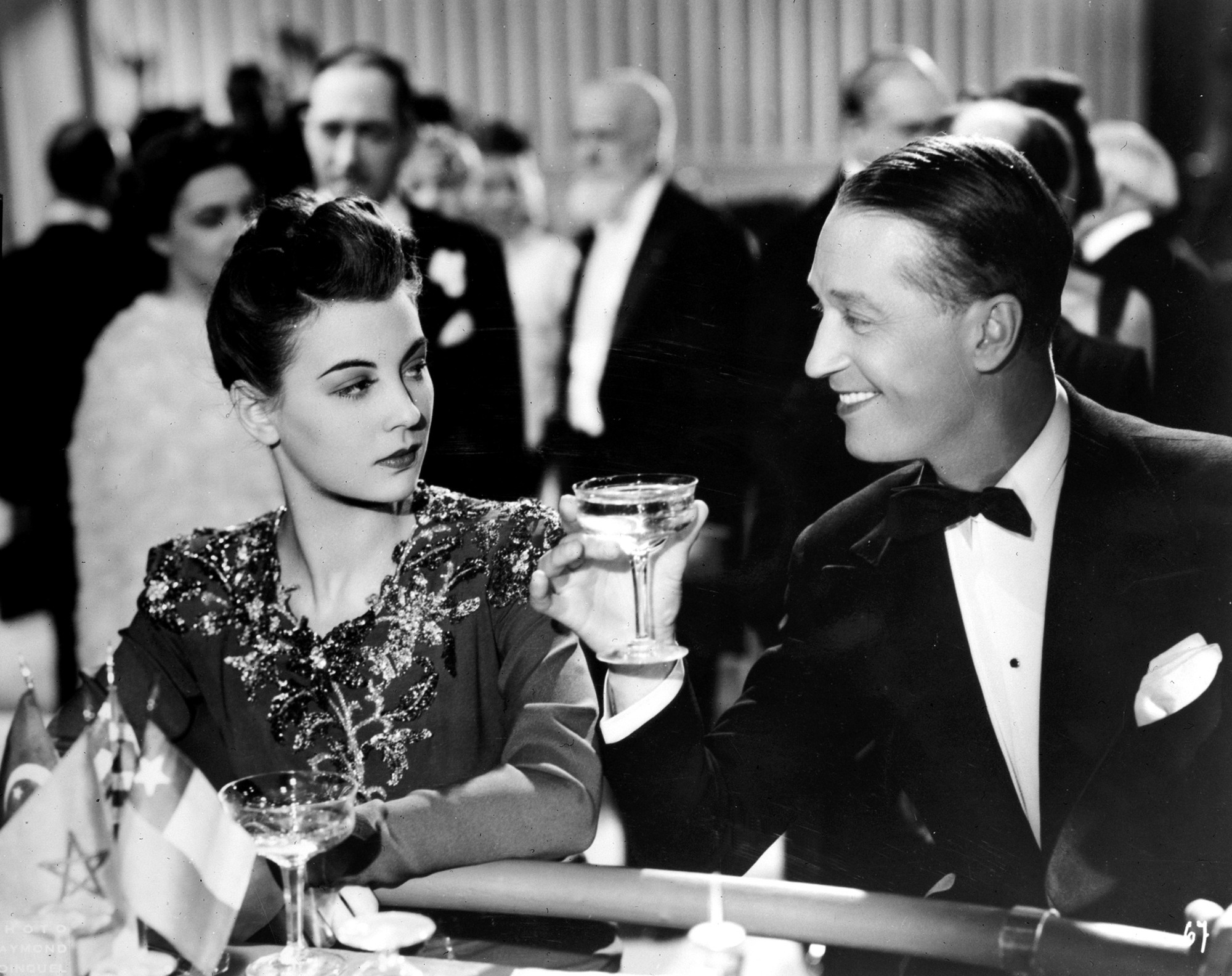
American's had already seen Chevalier with popular operetta singing/dancing star Jeanette MacDonald. She was normally paired with Nelson Eddy in American made musicals. Chevalier and MacDonald were first paired in the American made musical/comedy 1932's "Love Me Tonight" and again in the 1934 adaptation of the operetta "The Merry Widow". Which was the English cast version of the film. The original version, also with MacDonald and Chevalier, was filmed in France in French.
By the time "Personal Column" finally arrived in the United States. Maurice Chevalier had a specific image with the American public. That image was only partly seen in the Robert Siodmak motion picture.
1939's "Pieges" was a try out by the director of a film style he would be identified with throughout his career, but would not be given the name, "Film Noir", until 1946 by French movie critic Nino Frank. For the record some critics consider Alfred Hitchcock's "Rebecca", March 21, 1940, or "They Drive By Night" directed by Raul Walsh, released July 26, 1940, as the first "Film Noir". However, the forgotten film "Stranger on the Third Floor". Which was directed by Boris Ingster and starring Peter Lorre, released August 16, 1940, has the title of "The First True Film Noir".
The plot of Robert Siodmak's"Pieges" was about a "Taxi Dancer" who is murdered by an Unknown Man. According to the French Police she met her murderer by answering an advertisement in a Newspaper's Personal Column. Hence the U.S. title. Another dancer, portrayed by Marie Dea, is recruited by the French Police to answer a similar advertisement to help them track down the murder.
It was obvious that Adolph Hitler had eyes on France and Robert Siodmak knew he had to get out of the country and to the United States. Just after the completion of "Pieges" a myth about Robert Siodmak came into being. From the film community and other contacts Robert spoke too. Having been born in Germany and living in France would slow down, if not stop his chances of getting out. So he invented the story, backed by others, that he had been born in Memphis, Tennessee. It worked, but many biographers take this birth escape story as fact.
Curt was now using both "Curt" and "Kurt" for his work in the United Kingdom. He had written a play entitled "The Last Lord" as Kurt Siodmak and it was turned into the motion picture "Girl Will Be Boys" released in London on September 17, 1934.

The basic story was about a girl who dresses up as a boy to fool and get even with a young man who hates women. Kurt shared screenplay writing credits with Roger Burford and Clifford Grey.
On October 5, 1934 in Paris a French film "La crise est finie (The Crisis Is Over)" premiered. The film was based upon a story written by Kurt Siodmak and the picture was directed by Robert. It was a musical comedy.
Kurt Siodmak would be involved with five more British motion pictures and one needs to be mentioned here, because of his future work.
"Transatlantic Tunnel" was a Science Fiction story starring American Actor Richard Dix and British Actor Leslie Banks. It was based upon a 1913 German novel "Der Tunnel" by Bernhard Kellerman. Kurt Siodmak adapted the novel into a screen story and British author Lawrence du Garde Peach turned it into a screenplay.
As I write this article. While the idea of a tunnel being built from England to the United States under the Atlantic Ocean isn't being considered anymore. Such a tunnel from Dover, England to France under the English Channel is still being looked into. Science Fiction of yesterday. May still become the fact of today.

I don't know when the above caption was done, but the motion picture is available today and is also on the Internet.
HOLLYWOOD THE 1940'S
The first of the two brothers to start working in Hollywood was Kurt Siodmak. Working for Paramount Pictures with another writer Gerald Geraghty the two came up with a typical love story involving a girl raised on an island alone. "Her Jungle Love" starred Dorothy Lamour, as "Tura", three years before she went on the road with Bob Hope and Bing Crosby. Along with Ray Milland, as Bob Mitchell , one year before he made "Beau Geste" with Gary Cooper and Robert Preston. The movie was released October 7, 1938 while Robert was still in France.

I'll let Les Adams on IMDb give you the plot for the film:

Backing up in time to January 12, 1940, before Robert first entered the American film industry. Brother Kurt was working for Universal Studios and starting a career that would associate him with Horror and Science Fiction films.
With a story and screenplay by Kurt.Siodmak. Vincent Price took over for Claude Rains as "The Invisible Man Returns",

"Sir Geoffrey Radcliffe", Vincent Price, is wrongly accused of the murder of his brother. His friend "Dr, Frank Griffin", John Sutton, the brother of the original Invisible Man injects him with the serum of invisibility and he's off to find the real killer. However, he must do this quickly, before the serum also drives him crazy as had happened to "Frank's" brother in the original 1933 movie.
April 12, 1940 saw Boris Karloff and Bela Lugosi enjoying a "Black Friday" from a screenplay by Kurt Siodmak.

Kindly "Dr. Ernest Slovac's", Boris Karloff, friend is run over in a car accident. The bookish "Professor Kingsley", Stanley Ridges, is saved by a partial brain transplant by "Slovac". However, the partial brain he used was that of a killer and the College Professor at times is taken over by that side of his brain Don't look to much for Lugosi, no fault of Sidomak's, but his part as "Eric Marnay" was there to put his name on the picture. Another point the idea of a man taken over by another's brain would be turned into Curt Siodmak's 1942 novel "Donavan's Brain".
Loaned to Monograph Pictures and taking a play written by Adam Shirk and changing portions for the movie screen. Kurt Siodmak adapted the play "The Ape" and wrote the screenplay for the film starring Boris Karloff. While firmly establishing himself as a dependable and original writer for these types of motion pictures. The movie would be released September 30, 1940.

Screwball comedy was still enjoyed by millions of Americans and comedy writers Robert Lees ("Abbott and Costello Meet Frankenstein", "Abbott and Costello Meet the Invisible Man"), and Fred Rinaldo wrote the screenplay based upon a story idea by Kurt Siomak about "The Invisible Women". In the picture Virginia Bruce as Department Store Model "Kitty Carroll" is made invisible by the Great John Barrymore, hamming it up, as the scientist "Professor Gibbs". She then goes after the boss who fired her.

Kurt Siodmak began working on three motion pictures for Universal Studios and the first released would become a Horror Classic. In 1935 six writers worked upon a motion picture that starred Henry Hull entitled "The Werewolf of London".
On December 12, 1941 the studio released a film from an original story by Curt not Kurt Siodmak. He was also the only screenplay writer on the production. With "THE WOLF MAN" Curt Siodmak joined the immortals of Horror film making.
Among the dialogue created by Curt Siodmak was the one I partially quoted at this article's opening:
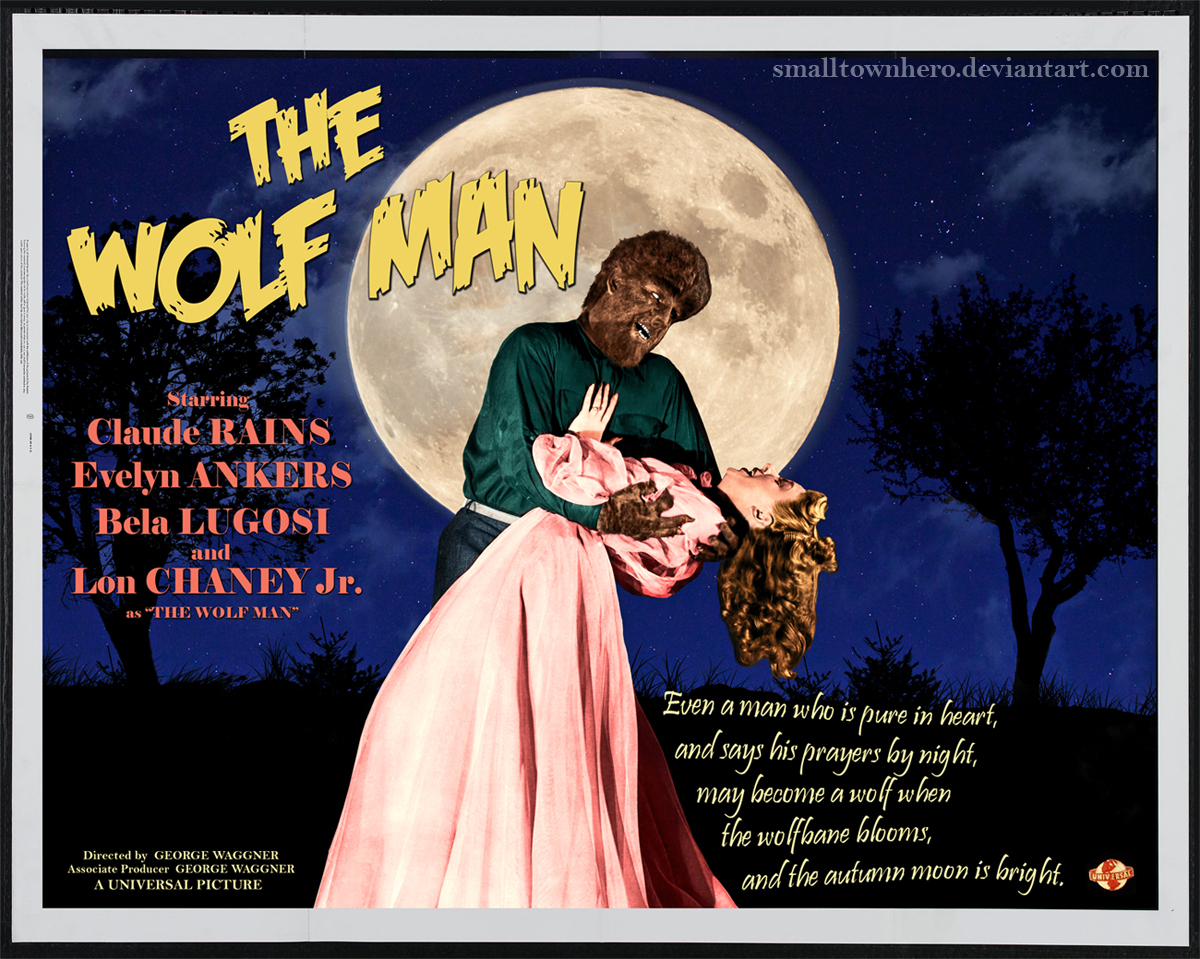
The story of the innocent "Lawrence 'Larry' Talbot", Lon Chaney. who is bitten by a werewolf, Bela Lugosi, is a tragic story that still resonates today. The audience is cheated, somewhat, by Universal Studios, as you never see Lugosi in his werewolf form. Although apparently it was in Curt Siodmak's screenplay. Also this film has another distinction perhaps overlooked by many. Starting with this motion picture Lon Chaney, Jr. dropped the "Junior" and became just "Lon Chaney". Although some of the posters still referred to him as Lon Chaney, Jr. as above. Note the poster below does not.

Bela Lugosi as the Gypsy "Bela" realizing who his next victim will be.


Above Evelyn Ankers as "Gwen Conliffe" explains the cane head to "Larry". Along with first reciting the Poem. On the back of the cane is the emblem a werewolf will see on their victims hands, before they change and kill them. Of course "Gwen's" a potential victim.
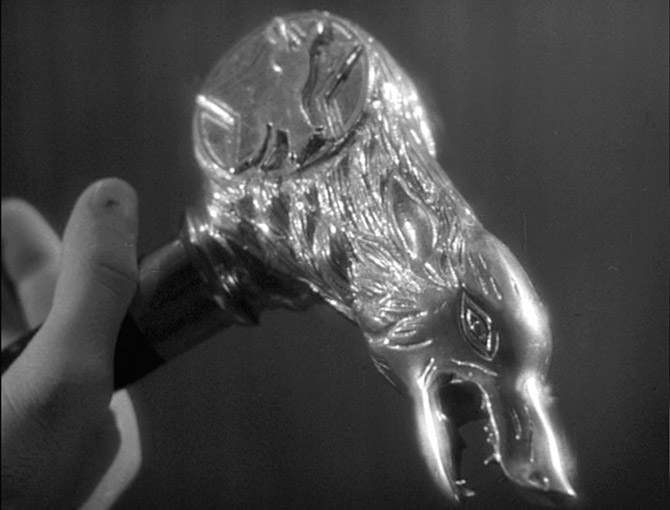
The following is a quotation from the New York Times Obituary for Curt Siodmak dated November 19, 2000. In it he explains that the motion picture was a metaphor for his own experiences in Nazi Germany.
Below Universal Studio's famed make-up artist Jack Pierce working on Lon Chaney, Jr.

My biography article on Jack P. Pierce can be read at:
http://www.bewaretheblog.com/2015/06/jack-p-pierce-man-who-created-monsters.html
My biography of Lon Chaney, Jr. may also be read at:
http://www.bewaretheblog.com/2016/05/lon-chaney-jr-of-mice-and-werewolves.html
On December 22nd another Dorothy Lamour film "Aloma of the South Seas" was released with a story by Curt Siomak and on December 31st ending the year of 1941 was "Pacific Blackout" from a story quickly created by Curt about protecting the California coast from the Japanese. My reader must remember this was all happening just after the December 7th bombing of Pearl Harbor.
There were only four films from the brothers in 1942. Robert started the year with "Fly By Night", released January 19th. It was about young "Dr. Geoffrey Burton", Richard Carlson, accused of the murder of a scientist. With the help of "Pat Lindsey", Nancy Kelly, he will track down the Nazi's that actually did the murder. As both films indicate hardly a month after Pearl Harbor the American Film Industry was in Propaganda picture mode. Robert would also direct two comedies.
While Curt created the original story and screenplay as "Curtiss" Siodmak for "The Invisible Agent" released July 31, 1942. In it Jon Hall, the grandson of the original 1933 'Invisible Man", fights Nazi Sir Cedric Hardwicke and Japanese Peter Lorre.
In 1943 Robert directed an interesting drama, for Republic Pictures, called "Someone to Remember". It was released on August 21st. The story is about a women whose son disappeared years before and she refuses to leave her Apartment in a building that was turned into a College Dorm for young men. One young troubled boy befriends the women. The now Elderly Lady believes he is her grandson. because he has her son's name. The climax comes when the boys father finally decides to visit and the women believes she is about to meet her long lost son once more.
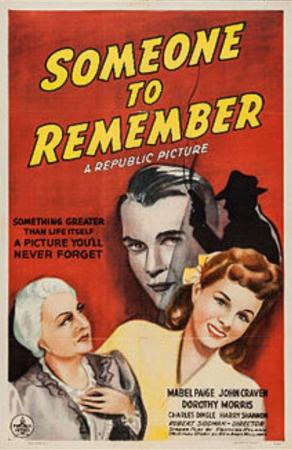
But it was Robert's next movie with brother Curt that is considered a classic of dark horror, but first Curt must reach this point.
Although Curt Siodmak worked upon seven feature films in 1943. There are only three I am interested in for this article and the last is the one with brother Robert. The first of the three brought back both Lon Chaney and Bela Lugosi.
With the original story and screenplay by Curt, released on March 5, 1943, was "Frankenstein Meets the Wolfman".
There are two points to be made about this motion picture. The first is a claim by Curt about how the story came about. According to the screenplay writer. He was at lunch in the Universal Studio Commissary with producer George Waggner. A man not known for joking around. Curt needed a new car and he pinched a title for a new Frankenstein film as a joke. The title was:
The second point is a piece of trivia.

According to the website "Films de France.com":
Director Robert Siodmak's six year long stint in France (after his hasty flight from Nazi Germany) got off to a flying start with the amiable if somewhat mechanical comedy adapted by Edouard Bourdet from his popular stage play of 1929.http://www.filmsdefrance.com/review/le-sexe-faible-1933.html
Robert Siodmak would make ten more motion pictures during his stay in France. It is the tenth of this group and his 11th motion picture, released December 16, 1939, that is of interest here. The film was entitled "Pieges (Trapped) and wasn't released in the United States as "Personal Column" until February 2, 1941. After being seen in nine other countries before reaching the States.

The motion picture starred French singer/actor Maurice Chevalier and featured Pierre Renior and Marie Dea. Deas and Chevalier are in the following photo.

American's had already seen Chevalier with popular operetta singing/dancing star Jeanette MacDonald. She was normally paired with Nelson Eddy in American made musicals. Chevalier and MacDonald were first paired in the American made musical/comedy 1932's "Love Me Tonight" and again in the 1934 adaptation of the operetta "The Merry Widow". Which was the English cast version of the film. The original version, also with MacDonald and Chevalier, was filmed in France in French.
By the time "Personal Column" finally arrived in the United States. Maurice Chevalier had a specific image with the American public. That image was only partly seen in the Robert Siodmak motion picture.
1939's "Pieges" was a try out by the director of a film style he would be identified with throughout his career, but would not be given the name, "Film Noir", until 1946 by French movie critic Nino Frank. For the record some critics consider Alfred Hitchcock's "Rebecca", March 21, 1940, or "They Drive By Night" directed by Raul Walsh, released July 26, 1940, as the first "Film Noir". However, the forgotten film "Stranger on the Third Floor". Which was directed by Boris Ingster and starring Peter Lorre, released August 16, 1940, has the title of "The First True Film Noir".
The plot of Robert Siodmak's"Pieges" was about a "Taxi Dancer" who is murdered by an Unknown Man. According to the French Police she met her murderer by answering an advertisement in a Newspaper's Personal Column. Hence the U.S. title. Another dancer, portrayed by Marie Dea, is recruited by the French Police to answer a similar advertisement to help them track down the murder.
It was obvious that Adolph Hitler had eyes on France and Robert Siodmak knew he had to get out of the country and to the United States. Just after the completion of "Pieges" a myth about Robert Siodmak came into being. From the film community and other contacts Robert spoke too. Having been born in Germany and living in France would slow down, if not stop his chances of getting out. So he invented the story, backed by others, that he had been born in Memphis, Tennessee. It worked, but many biographers take this birth escape story as fact.
Curt was now using both "Curt" and "Kurt" for his work in the United Kingdom. He had written a play entitled "The Last Lord" as Kurt Siodmak and it was turned into the motion picture "Girl Will Be Boys" released in London on September 17, 1934.

The basic story was about a girl who dresses up as a boy to fool and get even with a young man who hates women. Kurt shared screenplay writing credits with Roger Burford and Clifford Grey.
On October 5, 1934 in Paris a French film "La crise est finie (The Crisis Is Over)" premiered. The film was based upon a story written by Kurt Siodmak and the picture was directed by Robert. It was a musical comedy.
Kurt Siodmak would be involved with five more British motion pictures and one needs to be mentioned here, because of his future work.
"Transatlantic Tunnel" was a Science Fiction story starring American Actor Richard Dix and British Actor Leslie Banks. It was based upon a 1913 German novel "Der Tunnel" by Bernhard Kellerman. Kurt Siodmak adapted the novel into a screen story and British author Lawrence du Garde Peach turned it into a screenplay.
As I write this article. While the idea of a tunnel being built from England to the United States under the Atlantic Ocean isn't being considered anymore. Such a tunnel from Dover, England to France under the English Channel is still being looked into. Science Fiction of yesterday. May still become the fact of today.

I don't know when the above caption was done, but the motion picture is available today and is also on the Internet.
HOLLYWOOD THE 1940'S
The first of the two brothers to start working in Hollywood was Kurt Siodmak. Working for Paramount Pictures with another writer Gerald Geraghty the two came up with a typical love story involving a girl raised on an island alone. "Her Jungle Love" starred Dorothy Lamour, as "Tura", three years before she went on the road with Bob Hope and Bing Crosby. Along with Ray Milland, as Bob Mitchell , one year before he made "Beau Geste" with Gary Cooper and Robert Preston. The movie was released October 7, 1938 while Robert was still in France.

I'll let Les Adams on IMDb give you the plot for the film:
While searching the South Pacific for a missing aviator, Bob Mitchell and Jimmy Wallace are caught in a typhoon and crack up on an island, escaping unharmed with the aid of Tura, a beautiful jungle girl who is the only inhabitant of the island and is believed a goddess by the natives of the adjoining islands. The three are about to leave the island on a make-shift raft when a gang of savage tribesman land, headed by Kuasa, a half-mad potentate who informs them that all whites are his mortal enemies because an Englishwoman once spurned his love and he got his revenge by stealing her daughter, who is Tura. He had set her up as a goddess but she must now pay for befriending the hated white men by being sacrificed to the crocodiles in an underground temple. An earthquake rocks the island and destroys Kuasa and his band. Bob, Jimmy and Tura find a party of rescuers waiting on the beach, headed by aviation company president J.C. Martin and his daughter Eleanor, Bob's fiancée. It soon becomes evident that Bob must choose between Tura and Elanor.Robert Siodmak's first American directing assignment was "West Point Widow" starring Ann Shirley and was also for Paramount Pictures. The comedy was released June 20, 1941. The following lobby card for the motion picture should be of interest to fans of Universal Studio's Science Fiction/Horror films of the 1950's. You will note that Ann Shirley's two leading men were Richard Carlson and Richard Denning 13 years before the two made "The Creature from the Black Lagoon" together.

Backing up in time to January 12, 1940, before Robert first entered the American film industry. Brother Kurt was working for Universal Studios and starting a career that would associate him with Horror and Science Fiction films.
With a story and screenplay by Kurt.Siodmak. Vincent Price took over for Claude Rains as "The Invisible Man Returns",

"Sir Geoffrey Radcliffe", Vincent Price, is wrongly accused of the murder of his brother. His friend "Dr, Frank Griffin", John Sutton, the brother of the original Invisible Man injects him with the serum of invisibility and he's off to find the real killer. However, he must do this quickly, before the serum also drives him crazy as had happened to "Frank's" brother in the original 1933 movie.
April 12, 1940 saw Boris Karloff and Bela Lugosi enjoying a "Black Friday" from a screenplay by Kurt Siodmak.

Kindly "Dr. Ernest Slovac's", Boris Karloff, friend is run over in a car accident. The bookish "Professor Kingsley", Stanley Ridges, is saved by a partial brain transplant by "Slovac". However, the partial brain he used was that of a killer and the College Professor at times is taken over by that side of his brain Don't look to much for Lugosi, no fault of Sidomak's, but his part as "Eric Marnay" was there to put his name on the picture. Another point the idea of a man taken over by another's brain would be turned into Curt Siodmak's 1942 novel "Donavan's Brain".
Loaned to Monograph Pictures and taking a play written by Adam Shirk and changing portions for the movie screen. Kurt Siodmak adapted the play "The Ape" and wrote the screenplay for the film starring Boris Karloff. While firmly establishing himself as a dependable and original writer for these types of motion pictures. The movie would be released September 30, 1940.

Screwball comedy was still enjoyed by millions of Americans and comedy writers Robert Lees ("Abbott and Costello Meet Frankenstein", "Abbott and Costello Meet the Invisible Man"), and Fred Rinaldo wrote the screenplay based upon a story idea by Kurt Siomak about "The Invisible Women". In the picture Virginia Bruce as Department Store Model "Kitty Carroll" is made invisible by the Great John Barrymore, hamming it up, as the scientist "Professor Gibbs". She then goes after the boss who fired her.

Kurt Siodmak began working on three motion pictures for Universal Studios and the first released would become a Horror Classic. In 1935 six writers worked upon a motion picture that starred Henry Hull entitled "The Werewolf of London".
On December 12, 1941 the studio released a film from an original story by Curt not Kurt Siodmak. He was also the only screenplay writer on the production. With "THE WOLF MAN" Curt Siodmak joined the immortals of Horror film making.
Among the dialogue created by Curt Siodmak was the one I partially quoted at this article's opening:
EVEN A MAN WHO IS PURE IN HEART, AND SAYS HIS PRAYERS BY NIGHT MAY BECOME A WOLF WHEN THE WOLFBANE BLOOMS AND THE AUTUMN MOON IS BRIGHT!The above Poem was completely created by Curt, but popular belief is that it was a real ancient chant.

The story of the innocent "Lawrence 'Larry' Talbot", Lon Chaney. who is bitten by a werewolf, Bela Lugosi, is a tragic story that still resonates today. The audience is cheated, somewhat, by Universal Studios, as you never see Lugosi in his werewolf form. Although apparently it was in Curt Siodmak's screenplay. Also this film has another distinction perhaps overlooked by many. Starting with this motion picture Lon Chaney, Jr. dropped the "Junior" and became just "Lon Chaney". Although some of the posters still referred to him as Lon Chaney, Jr. as above. Note the poster below does not.

Bela Lugosi as the Gypsy "Bela" realizing who his next victim will be.


Above Evelyn Ankers as "Gwen Conliffe" explains the cane head to "Larry". Along with first reciting the Poem. On the back of the cane is the emblem a werewolf will see on their victims hands, before they change and kill them. Of course "Gwen's" a potential victim.

The following is a quotation from the New York Times Obituary for Curt Siodmak dated November 19, 2000. In it he explains that the motion picture was a metaphor for his own experiences in Nazi Germany.
'I am the Wolf Man' he said in an interview last year in Written By, the Magazine of the Writers Guild of America, west. 'I was forced into a fate I didn't want: to be a Jew in Germany. I would not have chosen that as my fate. The swastika represents the moon. When the moon comes up, the man doesn't want to murder, but he knows he cannot escape it, the Wolf Man destiny'
Below Universal Studio's famed make-up artist Jack Pierce working on Lon Chaney, Jr.

My biography article on Jack P. Pierce can be read at:
http://www.bewaretheblog.com/2015/06/jack-p-pierce-man-who-created-monsters.html
My biography of Lon Chaney, Jr. may also be read at:
http://www.bewaretheblog.com/2016/05/lon-chaney-jr-of-mice-and-werewolves.html
On December 22nd another Dorothy Lamour film "Aloma of the South Seas" was released with a story by Curt Siomak and on December 31st ending the year of 1941 was "Pacific Blackout" from a story quickly created by Curt about protecting the California coast from the Japanese. My reader must remember this was all happening just after the December 7th bombing of Pearl Harbor.
There were only four films from the brothers in 1942. Robert started the year with "Fly By Night", released January 19th. It was about young "Dr. Geoffrey Burton", Richard Carlson, accused of the murder of a scientist. With the help of "Pat Lindsey", Nancy Kelly, he will track down the Nazi's that actually did the murder. As both films indicate hardly a month after Pearl Harbor the American Film Industry was in Propaganda picture mode. Robert would also direct two comedies.
While Curt created the original story and screenplay as "Curtiss" Siodmak for "The Invisible Agent" released July 31, 1942. In it Jon Hall, the grandson of the original 1933 'Invisible Man", fights Nazi Sir Cedric Hardwicke and Japanese Peter Lorre.
In 1943 Robert directed an interesting drama, for Republic Pictures, called "Someone to Remember". It was released on August 21st. The story is about a women whose son disappeared years before and she refuses to leave her Apartment in a building that was turned into a College Dorm for young men. One young troubled boy befriends the women. The now Elderly Lady believes he is her grandson. because he has her son's name. The climax comes when the boys father finally decides to visit and the women believes she is about to meet her long lost son once more.

But it was Robert's next movie with brother Curt that is considered a classic of dark horror, but first Curt must reach this point.
Although Curt Siodmak worked upon seven feature films in 1943. There are only three I am interested in for this article and the last is the one with brother Robert. The first of the three brought back both Lon Chaney and Bela Lugosi.
With the original story and screenplay by Curt, released on March 5, 1943, was "Frankenstein Meets the Wolfman".
There are two points to be made about this motion picture. The first is a claim by Curt about how the story came about. According to the screenplay writer. He was at lunch in the Universal Studio Commissary with producer George Waggner. A man not known for joking around. Curt needed a new car and he pinched a title for a new Frankenstein film as a joke. The title was:
Frankenstein Wolfs the Meat ManWaggner left, but shortly afterward called Siodmak and told him to buy his car.
The second point is a piece of trivia.
How good is your hearing?
In the opening sequence of the film. When the older of the two grave robbers discovers the Wolfbane in "Larry Talbot's" coffin. He then recites the poem from 1941's, "The Wolf Man":
Even a man who is pure in heart, And says his prayers by night, May become a wolf when the Wolfbane blooms, and the Autumn Moon is Bright!
EXCEPT: The second line was changed by Curt Siodmak to:
WHEN THE WOLFBANE BLOOMS AND THE MOON IS FULL AND BRIGHT!
The way Curt Siodmak sets up the story. The picture has two distinct parts. The first is a direct sequel to his screenplay for "The Wolfman". While the second begins as a direct sequel to 1942's "The Ghost of Frankenstein".
Another interesting piece of trivia not related to Curt, but to "The Ghost of Frankenstein" angered Bela Lugosi. He was all set to create his own version of the "Frankenstein Monster", but director Roy William Neill told him he must walk exactly like his current co-star Lon Chaney ended the previous motion picture. Lugosi was stuck with the arms forward walk of the blind monster and this film pretty much made that walk associated forever with the creature.
The following Italian poster for "Frankenstein Meets the Wolf Man" translates into English as: "Frankenstein Against the Mankind Grey Wolf", or from another translation site as "Frankenstein Conquerors the Humanity Wolf". Anyone who understands Italian I would love to know how you read the Italian title for Curt Siodmak's screenplay.
+1.jpg)
Curt followed this picture with another typical World War 2 spy film for Republic Pictures called "The Purple V" that is not part of the three I want to mention. That second screenplay brought Curt Siodmak into the world of producer Val Lewton.
Released April 21, 1943 in New York City and directed by Jacques Tourneur "I Walked with a Zombie" still is spooky fun.
Francis Dee as Canadian nurse "Betsy Connell" tells in voice over how she once "Walked with a Zombie". The Zombie in this case is the wife of a plantation owner on a Caribbean Island very much like Haiti, if you've never seen any of the moody, low budget, films of Val Lewton. This film, thanks to Siodmak's intelligent screen play, the acting and direction by Tourneur, ("Cat People" and "Night of the Demon" aka: "Curse of the Demon"), will get you.

Val Lewton was an interesting producer. My article on his career can be read at:
http://www.bewaretheblog.com/2015/10/val-lewton-master-of-subtle-terror-and.html
I now come to the third feature film Curt made with Robert. Overall there are two camps about this film and it's either you like it, or you don't. Of all the Universal Studio's vampire pictures of the 1930's through the 1940's. This is my favorite. I would describe "SON OF DRACULA" as a Horror Film Noir with just a touch of 1920's German Expressionism.

The initial story was written by Curt Siodmak, but he wasn't the screenplay writer.
The screenplay was written by Eric Taylor. Taylor had worked on the screenplays for 1940's "Black Friday", 1941's "The Black Cat", 1942's "The Ghost of Frankenstein" and 1943's "The Phantom of the Opera". So he was a perfect fit with the "Brother's Siodmak".
The cinematographer assigned to the picture was George Robinson another perfect fit. He was the director of photography on 1936's "The Invisible Ray" and "Dracula's Daughter", 1939's "Son of Frankenstein" and "Tower of London", 1942's "The Mummy Tomb" and 1943's "Frankenstein Meets the Wolfman".
The main set decorator was Russell A. Gausman. He had worked on the sets for the 1925 "Phantom of the Opera", 1931 "Dracula" and 1932's "The Old Dark House". He designed sets for 1939's "Son of Frankenstein" and "Tower of London", 1940's "The Invisible Man Returns", "Black Friday" and "The Mummy's Hand", 1941's "The Black Cat" and "The Wolfman", 1942's "Ghost of Frankenstein", "The Night Monster" and "The Mummy's Tomb", 1943's "Frankenstein Meets the Wolfman" and "The Phantom of the Opera"
Special effect were by John P. Fulton 1932's "The Mummy", 1935 "The Werewolf of London", 1939 "Son of Frankenstein", 1940's "Black Friday" and "Man-Made Monster", 1941's "The Wolfman" and 1942's "The Ghost of Frankenstein".
Curt Siodmak's story has "The Son of Dracula" arrive in New Orleans, Louisiana. This opens the movie to some settings in the swamps, at a decaying Civil War plantation house and grave yard. All lending to highly stylized black and white photography and shadows reminiscent again of the German Expressionism horror films such as 1920's "The Cabinet of Dr. Caligari", or "The Golem: How He Came Into this World" and 1922's "Nosferatu: A Symphony of Horror".
The title character was called "Count Alucard". Which everyone knows is "Dracula" spelled backwards.

Above "Alucard" brings his now vampire bride Louise Allbritton as "Katherine 'Kay' Caldwell" into the plantation house. Again an originator it was Curt Siodmak who created the first, on screen, transformation from the vampire's human form into a bat. Even in Todd Browning's 1931 "Dracula". The audience sees Bela Lugosi as the Count or a Bat representing the title character, but before "Son of Dracula". The transformation was never shown.
The special effects in "Son of Dracula" had to show "Alucard" materializing from a mist per Curt Siodmak's story and Eric Taylor's screenplay. Another of Curt's originality. Note the lighting and shadows used in the following two stills.


Another materialization scene.

Below Frank Page as "Frank Stanley" fights "Alucard's" spell after destroying the women he loved "Kay Caldwell". Followed by the vampire "Alucard" is tricked to stay until the dawn and his death.
The screenplay was written by Eric Taylor. Taylor had worked on the screenplays for 1940's "Black Friday", 1941's "The Black Cat", 1942's "The Ghost of Frankenstein" and 1943's "The Phantom of the Opera". So he was a perfect fit with the "Brother's Siodmak".
The cinematographer assigned to the picture was George Robinson another perfect fit. He was the director of photography on 1936's "The Invisible Ray" and "Dracula's Daughter", 1939's "Son of Frankenstein" and "Tower of London", 1942's "The Mummy Tomb" and 1943's "Frankenstein Meets the Wolfman".
The main set decorator was Russell A. Gausman. He had worked on the sets for the 1925 "Phantom of the Opera", 1931 "Dracula" and 1932's "The Old Dark House". He designed sets for 1939's "Son of Frankenstein" and "Tower of London", 1940's "The Invisible Man Returns", "Black Friday" and "The Mummy's Hand", 1941's "The Black Cat" and "The Wolfman", 1942's "Ghost of Frankenstein", "The Night Monster" and "The Mummy's Tomb", 1943's "Frankenstein Meets the Wolfman" and "The Phantom of the Opera"
Special effect were by John P. Fulton 1932's "The Mummy", 1935 "The Werewolf of London", 1939 "Son of Frankenstein", 1940's "Black Friday" and "Man-Made Monster", 1941's "The Wolfman" and 1942's "The Ghost of Frankenstein".
Curt Siodmak's story has "The Son of Dracula" arrive in New Orleans, Louisiana. This opens the movie to some settings in the swamps, at a decaying Civil War plantation house and grave yard. All lending to highly stylized black and white photography and shadows reminiscent again of the German Expressionism horror films such as 1920's "The Cabinet of Dr. Caligari", or "The Golem: How He Came Into this World" and 1922's "Nosferatu: A Symphony of Horror".
The title character was called "Count Alucard". Which everyone knows is "Dracula" spelled backwards.

Above "Alucard" brings his now vampire bride Louise Allbritton as "Katherine 'Kay' Caldwell" into the plantation house. Again an originator it was Curt Siodmak who created the first, on screen, transformation from the vampire's human form into a bat. Even in Todd Browning's 1931 "Dracula". The audience sees Bela Lugosi as the Count or a Bat representing the title character, but before "Son of Dracula". The transformation was never shown.
The special effects in "Son of Dracula" had to show "Alucard" materializing from a mist per Curt Siodmak's story and Eric Taylor's screenplay. Another of Curt's originality. Note the lighting and shadows used in the following two stills.


Another materialization scene.

Below Frank Page as "Frank Stanley" fights "Alucard's" spell after destroying the women he loved "Kay Caldwell". Followed by the vampire "Alucard" is tricked to stay until the dawn and his death.


January 28, 1944 saw the release of director Robert Siodmak's "Phantom Lady". This film noir crime drama was about a secretary who is looking for the elusive women of the title. Believing she could prove her boss innocent of murder.
The motion picture starring Franchot Tone as "Jack Marlowe" and Ella Raines as "Carol 'Kansas' Richman" had three firsts. This was Robert Siodmak's first American Film Noir and the first motion picture produced by Joan Harrison. Joan Harrison was Universal Studio's first female executive and had been Alfred Hitchcock's screenplay writer for 1939's "Jamaica Inn", 1940's "Rebecca" and "Suspicion" and 1942's "Saboteur".
I previously mentioned Curt Siodmak's 1942 science fiction novel entitled "Donovan's Brain". It was about a scientist who keeps the brain of an evil multimillionaire alive and the brain starts to control him. This novel would be made into a feature film three times and a live television production. The first feature film, released April 12, 1944, was entitled "The Lady and the Monster". This version starred Vera Ralston as "Janice Farrell", Richard Arlen as "Dr Patrick Cory" and Erich von Stroheim as "Professor Franz Mueller".

In May 12, 1944 Robert found himself directing "Cobra Women". This adventure story is about a man who finds his kidnapped wife on a jungle island where her twin sister rules. The picture would be followed by his second American film noir starring Deanna Durbin and Gene Kelly "Christmas Holiday", The screenplay was based upon a W. Somerset Maugham story.
Robert's next picture "The Suspect" has a very unusual setting for any film noir. The film was set in 1902 in Edwardian London, England. It starred Charles Laughton and Ella Raines and was released on December 22, 1944.
Laughton's "Phillip Marshall" falls in love with Ella Raines' "Mary Gray" and murders his wife. So that he can be with "Mary" and then fate steps in. First in the form of a neighbor "Gilbert Simmons". Henry Daniell. "Simmons" has discovered "Phillip's" secret and starts to blackmail him, but what about Scotland Yard Inspector "Huxley", Stanley Ridges, who suspects there was a murder?

In 1943 Universal Studio's made the first Technicolor "Phantom of the Opera" and planned a sequel. In the original edit of the feature as the audience once again sees the buried "Phantom" and his mask. Looking closely that audience sees a slight movement of the debris that has fallen from the ceiling of the catacomb burying Claude Rains. A signal "The Phantom Lives!"
Boris Karloff portrayed "Dr. Friedrich Hohner" and from that original motion picture opera singer/actress Susana Foster was back as "Angela Klatt" not "Christine DuBois" of the previous film. The sets used were the exact one's seen the year before and were also used in the Lon Chaney, Sr. 1925 "Phantom of the Opera". Another signal Universal Studio had planned a sequel.
The story, if you read the credits, was based upon a play by Edward Locke from 1909. The only thing connected with that play in Curt Siodmak's screenplay was the title of the movie. Looking at the poster for the film Karloff had third billing and Foster first.
Edited out of the 1943 "Phantom of the Opera" was a scene between Claude Rains as "Erique Claudin/Phantom" and Nelson Eddy as "Anatole Garron" that confirmed "Christine" is "Claidin's" daughter. Which was a nice twist and explained some dialogue that didn't make sense.
Curt Siodmak just rewrote that 1943 screenplay with a change of names, relationships and location. You had Turhan Bey as "Franz Menser" the man in love with Susanna Foster instead of Nelson Eddy. Then you had Boris Karloff not as Foster's father, but a demented physician from for the Vienna Royal Theater. Who thinks "Angela's" voice is the same as the mistress he murdered ten years earlier. Now he wants to get Susana Foster's voice trained and for him only. Sounds like the "Phantom" and "Christine" to me.


Universal wanted another entry for their "Frankenstein" franchise and asked Curt to come up with a story, if you had two monsters in the previous entry. Why not really go overboard and the result was "The House of Frankenstein" turned loose on America December 15, 1944.

This is my last mention of Curt Siodmak's connection to the "Frankenstein" series, but if my reader is interested in the films. I wrote an article comparing them to the British Hammer series that started in 1957. The article can be found at:
http://www.bewaretheblog.com/2015/02/universals-frankenstein-vs-hammers.html
1945 saw two forgotten movies for Curt and only one for Robert. 1946 was a completely different year for the Brothers.
Columbia Pictures wanted Curt to come up with a swashbuckling story for the studio. In 1934 United Artists made a classic production of Alexander Dumas' "The Count of Monte Christo" starring Robert Donat. Six years later the studio made a sequel entitled "The Son of Monte Christo" starring Lewis Hayward. So what did Curt come up with for the Columbia Picture? Why, obviously "The Return of Monte Christo" with Hayward now as the "Grandson" of the original Count.
However, it was a psychological horror tale, for Warner Brothers, that Curt Siodmak provided Peter Lorre with a classic role. Lorre portrayed "Hilary Cummings" one of a group of people at the home of a famed pianist who has stroke. Then confined to a wheelchair, falls, or was pushed down a high staircase.
When the hand of the pianist begins to murder those in the house. Is it real, or is it imagination? Curt's screenplay keeps the audience and the characters guessing until the final scenes. Robert Alda, father of Alan, was "Bruce Conrad". While Andrea King played the pianist's nurse "Julie Holden". Did she kill him for money?

Next Robert was about to direct his three most famous film noir's.
While Curt dealt with psychological horror. Brother Robert brought the audience a psychological film noir thriller entitled "The Spiral Staircase" on February 7, 1946. The motion picture starred Dorothy McGuire as "Helen" a mute companion for the bedridden "Mrs. Warren" portrayed by Ethel Barrymore. "B" Leading Man George Brent was "Professor Albert Warren" Barrymore's son.

There is a serial killer in early 1910 New England that murders disabled women. "Helen" appears to be the next victim. There is a second doctor in the story and he's "Dr. Parry" played by Kent Smith. "Parry" has figured out the cause of "Helen's" lost of voice and can he make her remember before it's too late, or is he the killer?

Also in the cast were Rhonda Fleming as "Blanche" and Elsa Lanchester as "Mrs. Oats". Below Robert Siodmak works on a scene with Dorothy McGuire.

In 1927 Ernest Hemmingway wrote a short story entitled "The Killers". On August 28, 1946 Robert Siodmak's version of the story came to the big screen in an Oscar norminated film noir feature.

The on screen screenplay credit went to writer Anthony Veiler. As was the practice as Veiler was the head of Universal Studio's writing department. However, in reality "The Killers" was written by director/screenplay writer John Huston and future Oscar winning director/screenplay writer Richard Brooks.
The motion picture was the first appearance of actor Burt Lancaster as "Pete Lund/Ole 'Swede' Anderson". Ava Gardner was "Kitty Collins", Edmond O'Brien portrayed "Jim Readon", Albert Dekker was ""Big Jim Colfax" and Sam Levine played "Lieutenant Sam Lubinsky".
Below "The Killers" hired to kill "Swede".
_03.jpg)
The first 20 minutes of the film comes directly from Hemingway's short story leading to the murder of "Swede". The reminder of the picture is the investigation and "The Killers" is noted for the use of flashbacks, some within flashbacks, to tell the murder investigation. One of the four Oscars nominations was director Robert Siodmak.
The Best Director Oscar went to William Wyler for "The Best Years of Our Lives", the other nominees Robert was up against were:Clarence Brown for "The Yearling", Frank Capra for "It's A Wonderful Life" and David Lean for "Brief Encounter". A great group to be associated with.
Ernest Hemingway considered Robert Siodmak's "The Killers" the only motion picture he ever saw of his works that he could admire.

"The Dark Mirror", October 18, 1946, was the first motion picture to deal with the idea of "Twins", One Good, One Pure Evil, but which is which? This film noir starred Oliva de Havilland as "Terry and Ruth Collins".
Above, Olivia de Havilland and Lew Ayres was "Dr Scott Elliott" and, below, Thomas Mitchell was "Lieutenant Stevenson".
The poster mentions the fourth billed actor was Richard Long. Long was 19 when he made this picture portraying "Rusty". 13 years before he was in William Castle's "House on Haunted Hill" and 19 before television's "The Big Valley".
For Curt Siodmak the decade of the 1940's closed with two pieces of work. He wrote the story for the Jacques Tourneur directed "Berlin Express" and the screenplay for "Tarzan and the Magic Fountain" that starred Lex Barker as Edgar Rice Burroughs' hero.
Richard Siodmak directed two formula film noirs, one interesting film noir and a star studded period piece that flopped.
The interesting film noir was "Criss Cross", January 19, 1949, starring Burt Lancaster as "Steve Thompson". He returns to Los Angeles and meets his ex-wife "Anna", Yvonne DeCarlo. Who is all too happy to rekindle their lost love, but in reality is connected to mobster "Slim Dundee", Dan Duryea. "Dundee" has plans of his own for "Thompson".
Look closely at the guy dancing with DeCarlo in "The Round Up Bar". It's Bernard Schwartz using his first screen name of Anthony Curtis, before he shorten it to Tony Curtis.
The flop was released on June 29th as "The Great Sinner". The motion picture was based upon the novel "The Gambler" by Russian author Fyodor Dostoyevsky and set during the 1860's in Wiesbaden, Germany. The following poster gives you the main cast.

Robert Siodmak, who was brought in just before the film was to start production, felt overwhelmed by the scope of the screenplay and it's cast. Gregory Peck said that he appeared highly nervous, but the blame for the film's failure fell on screenplay writer Christopher Isherwood. Who adapted Dostoyeysky's novel in the first place and producer Gottfried Reinhardt. Who sold MGM on the lavish film, but overlooked the detail of character.
Isherwood stated at the time:
FLYING SAUCERS, PIRATES AND GERMAN WESTERNS
The final two American film noir's by Robert Siodmak's, bringing his total in that genre to 12, were released in 1950. Producer Hal B. Wallis, at Paramount Pictures, cast Barbara Stanwyck as "Thelma Jordon", Wendell Corey as "Assistant District Attorney Cleve Marshall" and Paul Kelly as "Miles Scott" in "The File on Thelma Jordan" aka: "Thelma Jordon". He next gave the directing job to Robert Siodmak for January 5, 1950 release.
%2B1.jpg)
"Thelma" reports a series of robberies at her "Aunt Vera's", Gertrude Hoffman, home to "Cleve Marshall". The two fall in love, but then "Thelma's Aunt" is murdered and instead of calling the police. She calls "Cleve" for help covering up possible evidence that might look like she committed the crime. Still she becomes the Prime Suspect, but at the trial "Marshall" finds ways to protect her and "Thelma" is found Not Guilty. Is Marshall now an accomplice to a murder? The twists go on right to the picture's ending.
Jump to November 1st and Jeff Chandler starred as an America mobster, "Vittorio Mario Spanducci aka: Vic Smith" "Deported" to Italy. There he meets Marta Toren as "Countess di Lorenzi".

Publicity for the film claimed the picture was based upon the deportation of gangster Charles "Lucky" Luciano. However in an interview in October 1950 Jeff Chandler told the Los Angeles Times Newspaper:
During 1951 Curt worked on two early television programs. The first was the forgotten "Front Page Detective" about a reporter that helps the police. He wrote three episodes and the teleplay for another. The second show was actress "Jane Wyman's Fireside Theater". Which was the first major television anthology series and Curt Siodmak wrote a program called "Looking Through" for a January 16, 1951 airing. Wyman had divorced her third husband Ronald Reagan two years previously.
With a Story and Screenplay by Curt was a pure piece of schlock that is the laughable classic "The Bride of the Gorilla". The movie has third billed Raymond Burr as "Barney Chavez" murder the owner of a jungle plantation to be able to marry his widow "Dina van Gelder", Barbara Payton.
The problem for "Barney" is that an ancient witch named "Al-Long", played by Giselle Werbisek, saw the murder, She places a curse upon him that causes "Barney" to turn into a gorilla at times. Lon Chaney is "Police Commissioner Taro" investigating both the murder and a series of other killings.

The movie was parodied in on the television series "M*A*S*H" in the episode "Sticky Wickets". Oh and the man in the gorilla costume, Steve Calvert, doesn't appear until the very end of the film.
Filmed at Teddington Studios in England and in Italy, released September 27, 1952, was a motion picture directed by Robert Siodmak starring Burt Lancaster. Lancaster was "Captain Vallo" known as "The Crimson Pirate". The character is considered by both Jerry Bruckheimer and Johnny Depp as "The Grandfather of Jack Sparrow".

In a small recurring role as a Spanish Naval Officer was an unknown British actor named Christopher Lee. In his autobiography, "Christopher Lee, Tall, Dark and Gruesome", Lee described the creation of this excellent parody of 1940's and 1950's pirate movies:
http://www.bewaretheblog.com/2016/04/burt-lancaster-circus-acrobat-turned.html

For those interested in Torin Thatcher, best known for "The 7th Voyage of Sinbad", my blog article is at:
http://www.bewaretheblog.com/2017/07/torin-thatcher-career-of-great-british.html
Another forgotten American television show "Big Town" in January 1953 featured one episode from Curt Siodmak, but it was his next picture that started a trend toward 1950's Science Fiction that is of interest to me.
The story and screenplay were co-written by Curt and producer Ivan Tors. "The Magnetic Monster" was low budget, but had a very plausible, intelligent story with fine acting from Richard Carlson and King Donovan. It is still considered interesting.

The picture was directed by Curt in a documentary style which changed the low budget look into a plus. A scientist creates an isotope that must consume more energy from its surroundings as it doubles in size every 11 hours and in theory could eventually destroy the Earth.
This was the first film in Ivan Tors "Office of Scientific Investigation Trilogy".
On September 30, 1953 probably the best of the three versions of Curt Siodmak's novel "Donovan's Brain" was released under that title. Lew Ayers portrayed "Dr. Patrick Cory" the scientist who keeps the brain of businessman "W.H. Donovan" alive. Playing his wife, "Janice Cory" was Nancy Davis. The previous year she married Ronald Reagan.
Below Lew Ayers and Nancy Davis
For Curt Siodmak the decade of the 1940's closed with two pieces of work. He wrote the story for the Jacques Tourneur directed "Berlin Express" and the screenplay for "Tarzan and the Magic Fountain" that starred Lex Barker as Edgar Rice Burroughs' hero.
Richard Siodmak directed two formula film noirs, one interesting film noir and a star studded period piece that flopped.
The interesting film noir was "Criss Cross", January 19, 1949, starring Burt Lancaster as "Steve Thompson". He returns to Los Angeles and meets his ex-wife "Anna", Yvonne DeCarlo. Who is all too happy to rekindle their lost love, but in reality is connected to mobster "Slim Dundee", Dan Duryea. "Dundee" has plans of his own for "Thompson".
Look closely at the guy dancing with DeCarlo in "The Round Up Bar". It's Bernard Schwartz using his first screen name of Anthony Curtis, before he shorten it to Tony Curtis.
The flop was released on June 29th as "The Great Sinner". The motion picture was based upon the novel "The Gambler" by Russian author Fyodor Dostoyevsky and set during the 1860's in Wiesbaden, Germany. The following poster gives you the main cast.

Robert Siodmak, who was brought in just before the film was to start production, felt overwhelmed by the scope of the screenplay and it's cast. Gregory Peck said that he appeared highly nervous, but the blame for the film's failure fell on screenplay writer Christopher Isherwood. Who adapted Dostoyeysky's novel in the first place and producer Gottfried Reinhardt. Who sold MGM on the lavish film, but overlooked the detail of character.
Isherwood stated at the time:
It should have been much better than it was....but apart from a few good scenes, it was neither Dostoevsky's story, nor the story of DostoevskyIn three years Robert Siodmak would return to Europe and before that Curt would discover the new medium of television.
FLYING SAUCERS, PIRATES AND GERMAN WESTERNS
The final two American film noir's by Robert Siodmak's, bringing his total in that genre to 12, were released in 1950. Producer Hal B. Wallis, at Paramount Pictures, cast Barbara Stanwyck as "Thelma Jordon", Wendell Corey as "Assistant District Attorney Cleve Marshall" and Paul Kelly as "Miles Scott" in "The File on Thelma Jordan" aka: "Thelma Jordon". He next gave the directing job to Robert Siodmak for January 5, 1950 release.
%2B1.jpg)
"Thelma" reports a series of robberies at her "Aunt Vera's", Gertrude Hoffman, home to "Cleve Marshall". The two fall in love, but then "Thelma's Aunt" is murdered and instead of calling the police. She calls "Cleve" for help covering up possible evidence that might look like she committed the crime. Still she becomes the Prime Suspect, but at the trial "Marshall" finds ways to protect her and "Thelma" is found Not Guilty. Is Marshall now an accomplice to a murder? The twists go on right to the picture's ending.
Jump to November 1st and Jeff Chandler starred as an America mobster, "Vittorio Mario Spanducci aka: Vic Smith" "Deported" to Italy. There he meets Marta Toren as "Countess di Lorenzi".

Publicity for the film claimed the picture was based upon the deportation of gangster Charles "Lucky" Luciano. However in an interview in October 1950 Jeff Chandler told the Los Angeles Times Newspaper:
I understand Luciano was really disappointed with the idea When our producer, Robert Buckner, mentioned this to him.On August 1, 1951 a drama starring Lloyd Bridges "The Whistle at Eaton Falls" was released. It was about a man brought in to manage a New Hampshire manufacturing plant who finds love. The picture was the last film made by Robert in the United States and he left with his wife first for England.
During 1951 Curt worked on two early television programs. The first was the forgotten "Front Page Detective" about a reporter that helps the police. He wrote three episodes and the teleplay for another. The second show was actress "Jane Wyman's Fireside Theater". Which was the first major television anthology series and Curt Siodmak wrote a program called "Looking Through" for a January 16, 1951 airing. Wyman had divorced her third husband Ronald Reagan two years previously.
With a Story and Screenplay by Curt was a pure piece of schlock that is the laughable classic "The Bride of the Gorilla". The movie has third billed Raymond Burr as "Barney Chavez" murder the owner of a jungle plantation to be able to marry his widow "Dina van Gelder", Barbara Payton.
The problem for "Barney" is that an ancient witch named "Al-Long", played by Giselle Werbisek, saw the murder, She places a curse upon him that causes "Barney" to turn into a gorilla at times. Lon Chaney is "Police Commissioner Taro" investigating both the murder and a series of other killings.

The movie was parodied in on the television series "M*A*S*H" in the episode "Sticky Wickets". Oh and the man in the gorilla costume, Steve Calvert, doesn't appear until the very end of the film.
Filmed at Teddington Studios in England and in Italy, released September 27, 1952, was a motion picture directed by Robert Siodmak starring Burt Lancaster. Lancaster was "Captain Vallo" known as "The Crimson Pirate". The character is considered by both Jerry Bruckheimer and Johnny Depp as "The Grandfather of Jack Sparrow".

In a small recurring role as a Spanish Naval Officer was an unknown British actor named Christopher Lee. In his autobiography, "Christopher Lee, Tall, Dark and Gruesome", Lee described the creation of this excellent parody of 1940's and 1950's pirate movies:
The script started life as serious, nay solemn, but Robert Siodmak, the director, with all the sure touch of real tension behind him in The Killers and The Spiral Staircase, took stock of the material in forty-eight hours and turned it into a comedy. It was like a Boy's Own Paper adventure, except that Eva Bartok was in it.My article on Burt Lancaster and his childhood friend Nick Cravat that ran off to actually join the circus and became an acrobatic team. It can be read at:
http://www.bewaretheblog.com/2016/04/burt-lancaster-circus-acrobat-turned.html

For those interested in Torin Thatcher, best known for "The 7th Voyage of Sinbad", my blog article is at:
http://www.bewaretheblog.com/2017/07/torin-thatcher-career-of-great-british.html
Another forgotten American television show "Big Town" in January 1953 featured one episode from Curt Siodmak, but it was his next picture that started a trend toward 1950's Science Fiction that is of interest to me.
The story and screenplay were co-written by Curt and producer Ivan Tors. "The Magnetic Monster" was low budget, but had a very plausible, intelligent story with fine acting from Richard Carlson and King Donovan. It is still considered interesting.

The picture was directed by Curt in a documentary style which changed the low budget look into a plus. A scientist creates an isotope that must consume more energy from its surroundings as it doubles in size every 11 hours and in theory could eventually destroy the Earth.
This was the first film in Ivan Tors "Office of Scientific Investigation Trilogy".
On September 30, 1953 probably the best of the three versions of Curt Siodmak's novel "Donovan's Brain" was released under that title. Lew Ayers portrayed "Dr. Patrick Cory" the scientist who keeps the brain of businessman "W.H. Donovan" alive. Playing his wife, "Janice Cory" was Nancy Davis. The previous year she married Ronald Reagan.
Below Lew Ayers and Nancy Davis
Curt wrote the 24th episode of Season One of Richard Carlson's television series "I Led 3 Lives" entitled "Infra Red Film". He followed that by writing the original story, screen play and novel for the second feature in Ivan Tors "Office of Scientific Investigation Trilogy" entitled "Riders to the Stars".
As with "The Magnetic Monster" the film was based upon scientific fact and theory for the year produced. From 1955 through 1957 for 78 episodes. Ivan Tors produced "Science Fiction Theater" a television series also revolving around science fact and speculation.
The story for "Riders to the Stars" had a group of subjects that were required to be single males. Who were qualified jet pilots and possibly scientists. This group would be screened for a top secret project. Those chosen were to fly into space, capture a small meteorite and return to base. The purpose was to bring meteorites untouched by the Earth's atmosphere back for study. In the hope of perfecting a covering for deep space rocket exploration.
The movie was directed by Richard Carlson who also played "Dr, Jerome "Jerry" Lockwood". The main star was William Lundigan as "Dr. Richard Donald Stanton". Also in the cast were Martha Hyer as "Dr, Jane Flynn". Herbert Marshall as the project head "Dr. Donald L. Stanton", King Donovan as "James F. O'Herli, Chief of Security" and James Best as "Sidney K., Fuller".

.jpg)
The third film in the trilogy was 1954's "GOG" in 3-D. but neither Siodmak or Carlson were involved. Should my reader be interested in a detail look at Ivan Tors and this trilogy. My article may be read at:
http://www.bewaretheblog.com/2016/07/ivan-tors-office-of-scientific.html
Also my biography on Richard Carlson can be found at:
http://www.bewaretheblog.com/2015/08/richard-carlson-academic-turned-actor.html
Curt Siodmak finished 1954 by writing an episode of the television series "Waterfront" that starred Preston Foster.
Brother Robert was now in France directing motion pictures. On April 12, 1954 the French/Italian co-production ""Le Grand Jeu (The Big Game)" was released in France. The motion picture tells the story of a French Lawyer who falls for a beautiful Italian Girl. They start living beyond their means and eventually he is broke. She leaves him and he joins the French Foreign Legion.
Portraying the girl was Gina Lollobrigida. The film wouldn't arrive in the United States in an English dubbing as "Flesh and the Women" until June 1958.
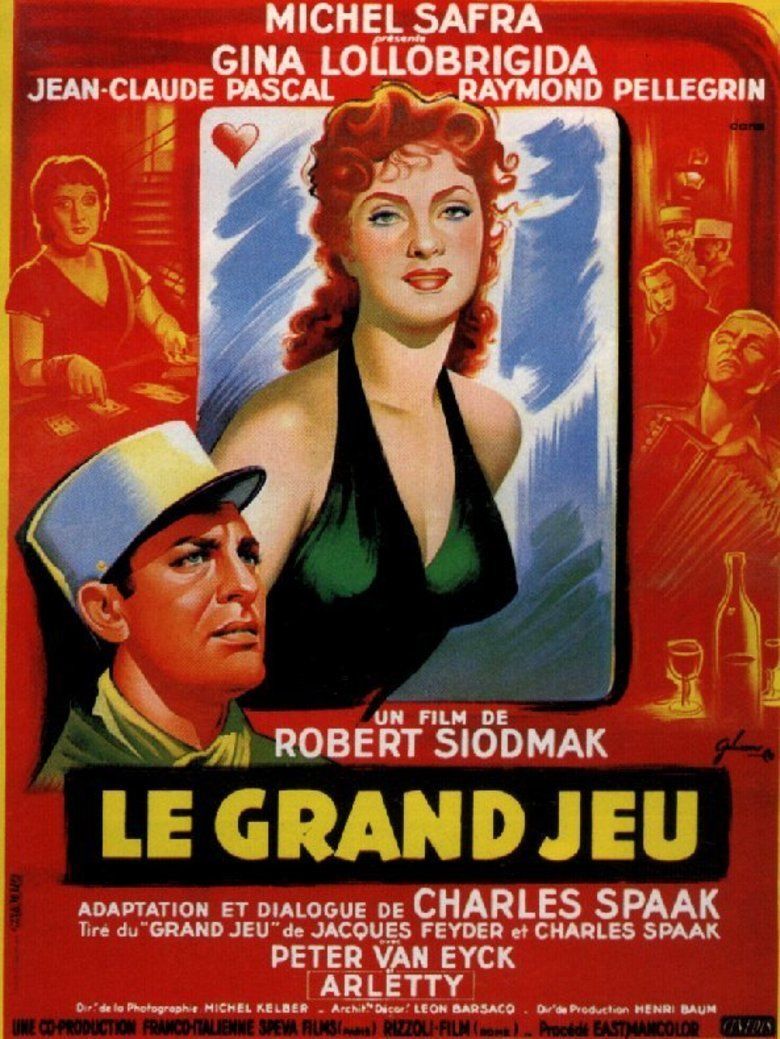
After that one French film. In 1955 Robert decided to return to his homeland in what was now West Germany to make motion pictures. His first feature was "Die Ratten (The Rats)", July 6, 1955. The movie, which never came to the United States, is a drama set in the horror German's faced after the Second World War ended.
The story tells of a young women, "Pauline Karka", forced to sell her baby for money to survive. The role of "Brund Mechelke" was portrayed by Curd (Curt) Jurgens.
While in the United States brother Curt, on February 28, 1955, saw his novel "Donovan's Brain" adapted to television on the anthology series "Studio One Hollywood"starring Wendell Corey as "Dr Cory" and E.G. Marshall as "Dr. Shratt". He also wrote a program for another anthology show "The Pepsi-Cola Playhouse" and made a 26 minute pilot for a proposed science fiction show entitled "Captain Fathom". The series was not picked up.

Above, "Captain Fathom", Don Megowan, second on the right,and his submarine crew discover an atomic bomb on the ocean floor. They must disarm it, before the enemy appears to stop them.
Also in the cast was Kenneth Tobey who was in another submarine picture in 1955 "It Came From Beneath the Sea". My article about Tobey, my neighbor when I was 8 to 11 years of age, can be read at:
http://www.bewaretheblog.com/2016/10/a-memory-of-my-neighbors-barbara-luddy.html
Curt did come up with the original story and write the screenplay for a motion picture produced by Sam Katzman for Columbia Pictures and starring Richard Denning.
"Creature with the Atom Brain", July 1, 1955, told the story of a mobster getting even with the men who sent him to prison. He teams up with an ex-Nazi Scientist to put electronically controlled brains into the reanimated corpse's of dead men. He watches what they see on a television screen. As well as talk in his own voice to his victims. Richard Denning was Los Angeles Police Criminologist "Dr. Chet Waker".
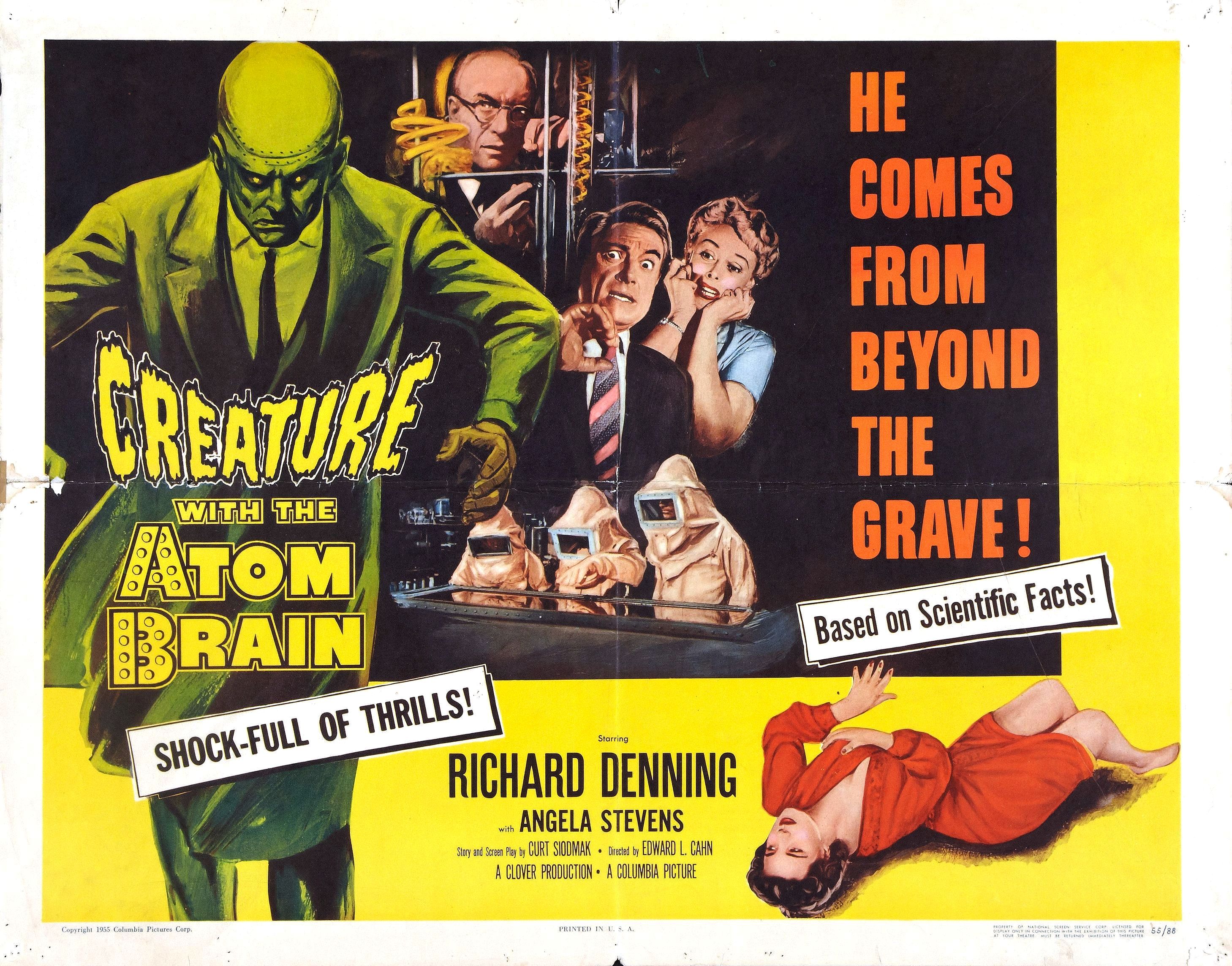
In 1956 Curt Siodmak met with another Columbia Pictures Producer Charles H. Schneer with an idea for a motion picture based upon Air Force Major Donald E. Keyhoe's book "Flying Saucers from Outer Space". The result was the Ray Harryhausen classic "Earth vs the Flying Saucers" released on July 1, 1956. Screenplay writer George Worthing Yates adapted Curt's story.

I saw the picture the first weekend it opened on a double bill with a forgotten, but excellent horror tale "The Werewolf". Starting with "It Came from Beneath the Sea" Charles H. Schneer was stop motion animated Ray Harryhausens friend and business partner, but most people do not associate his name with the movies the two made. The following link will take my reader to my biography on the producer.
http://www.bewaretheblog.com/2016/09/charles-h-schneer-look-at-work-of.html
After creating the story for "Earth vs the Flying Saucers". Curt Siodmak wrote an episode of the television series "The Count of Monte Cristo" and both the story and screenplay for the movie "Curcucu, the Beast of the Amazon" released in December, 1956.
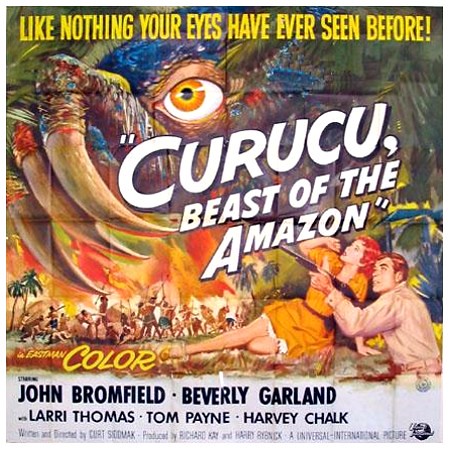
Don't let the title and poster fool you. The picture also directed by Curt Siomak is actually a typical Jungle adventure film. John Bromfield is plantation owner, "Rock Dean" living along the Amazon River. Beverly Garland is "Dr. Andrea Romar" searching for a native drug that she believes will reduce the size of cancerous tissue. Apparently the drug is used to shrink heads.
The two go in search of "Rock's" plantation workers who have mysteriously left one night. They will meet the legendary "Curcucu" who is responsible for the workers disappearance.


Bromfield and Garland are accompanies by their guide "Tumpanico", Tom Paine.

"Curcucu" turns out to be "Tumpanico". Who wants to lead his people away from the plantation and back to the old ways under his leadership.
When the final cut was completed. Curt Siodmak discovered he had over 10,000 feet of unused footage. So he wrote and directed "Love Slaves of the Amazon" released a year later. The film tells of an archaeologist "Dr Peter Masters", Don Taylor, who discovers a lost tribe of Amazons.

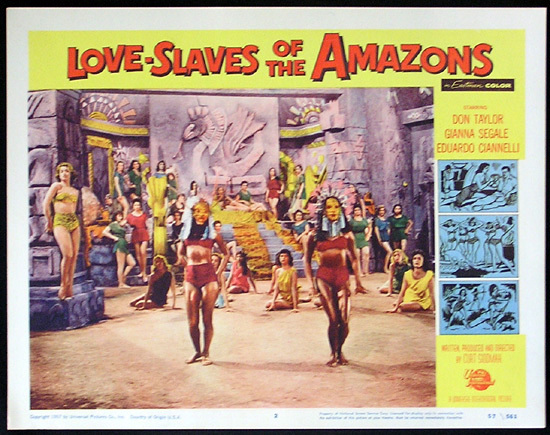
During this period Robert continued to make German motion pictures including the Academy Award nominated Best Foreign Language Film "Nachts, wenn der Teufel kam (At Night, When the Devil Came)". It was released in West Germany on September 19, 1957 and in the United States in an English dub as "The Devil Strikes at Night" on January 29, 1959.

This film noir thriller was based upon the true story of serial killer Bruno Ludke. The story takes place during the final two years of World War 2 with the "Wrong Man" being arrested and a police officer tracking down the real killer.

While Curt was making "Love Slaves of the Amazon" his brother Robert worked on the first of four episodes of the British television series "O.S.S. (Office of Strategic Service)". This work would take him into 1958. The series only ran for one season of 26 episodes. As it did not catch on in either the U.K. of the United States. So he returned to West Germany to make a motion picture. The film was about a clergy man's daughter who might have murdered the man she was force to marry after becoming pregnant.
"Tales of Frankenstein" was an unsold pilot written and directed by Curt Siodmak in 1958. The project was a co-production of Columbia Pictures and Hammer Films.
The joint American/British co-operation showed in the casting. Portraying "Baron Frankenstein" was German born Hammer character actor Anton Diffring. Who had just appeared in Robert Siodmak's "O.S.S." directed "Operation Eel" and the following year would be Hammer Films "The Man Who Cheated Death".
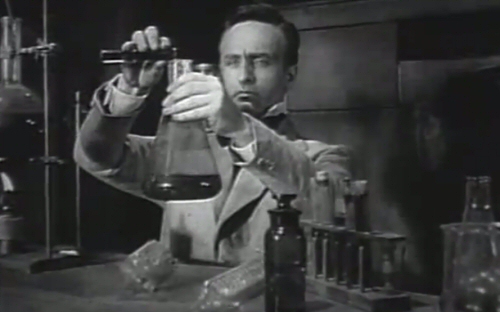
Portraying the very Universal Studio's looking "Monster" was actor Don Megowan. He had portrayed the non-screen credited land version of "The Creature from the Black Lagoon" in 1956's "The Creature Walks Among Us", but had already been seen as "Colonel Travis" in the Alamo segment of Walt Disney's "Davy Crockett". As well as the "Sheriff" in my previously mentioned 1956 movie "The Werewolf" and "Captain Fathom" in Curt's unsold pilot.

In 1959 Curt Siodmak originated the television series "13 Demon Street". He wrote and directed four of the 25 minute long episodes himself. The series, which only ran for 13 programs, was hosted by Lon Chaney. What made it even more interesting was the production was Swedish, but spoken in England and it never played in the United States. You can find the series on DVD.
.jpg)
Another interesting fact was Lon went back to being called Lon Chaney, Jr. for this program.
.jpg)
On October 23, 1962 a movie starring Lon Chaney was released in the United States. "The Devil's Messenger" is actually three of the programs from "13 Demon Street" edited into a feature film.


14 days earlier in West Germany a British/German co-production "The Brain" was released. This was the third feature film based upon Curt Siodmak's "Donovan's Brain". The actual title for the picture was "Ein Toter sucht seinen Morder ( A Dead Man Seeks His Murder)" and that was the twist on Curt's original novel. The brain being kept alive uses the scientist "Dr. Peter Corrie", played by Peter van Eyck, to track down his murderer. British actress Anne Heywood actually was the star portraying "Anna Holt". The movie finally came to the United States in 1964.

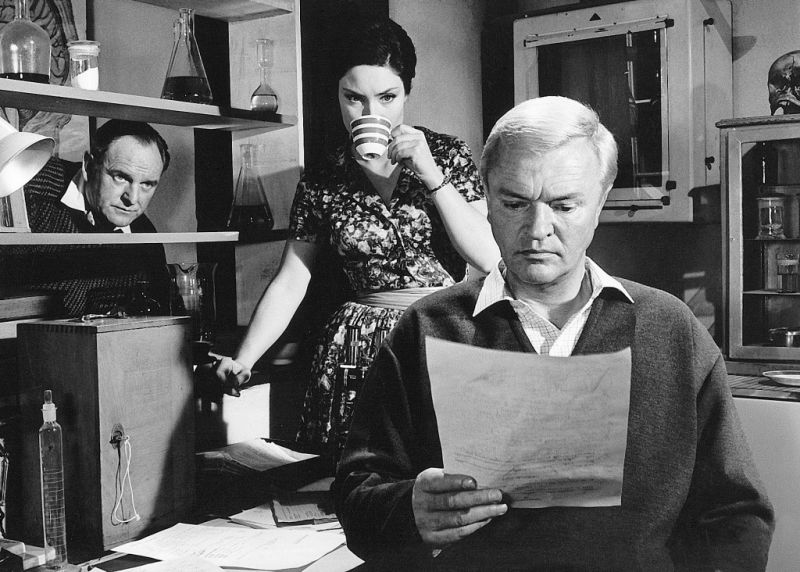
Staying in October of 1962. On the 22nd in West Berlin was the premier of a United States/West Germany co-production directed by Robert Siodmak. The movie was "Escape from East Berlin" aka" "Tunnel 28".
Today with a united Germany most of my readers may not know, as I remember, that the city of Berlin was split into two. The East was under Soviet rule and to stop people escaping to the free West. The Soviet Union built a Wall. While West Berlin was under Allied Occupation.
On January 28, 1962 an actual escape took place to the freedom of the West side of the city through a tunnel constructed under "The Wall". Robert Siodmak's motion picture was based upon that story. The motion picture starred American Don Murray as "Kurt Schrodder" and German actreess Christine Kaufmann as "Erika Jurgens". At the time Kaufmann was married to American actor Tony Curtis.

Released in West Germany on November 30, 1962 was "Sherlock Holmes und das Haisbland des Todses (Sherlock Holmes and the Collar of Death)" aka: "Sherlock Holmes and the Deadly Necklace". The motion picture was a co-production of West Germany, Italy and France with a story and screenplay by Curt Siodmak. The film was shot in four languages German, French, Italian and English. The actor portraying "Sherlock Holmes" fluently spoke each. He was Christopher Lee and British actor Thorley Walters was "Dr. Watson".
The plot revolves around a search for Cleopatra's necklace. The movie didn't reach the UK until 1968 and went directly to television in the United States the same year, Also in the cast were Austrian actress Senta Berger as "Ellen Blackburn" and German actor Hans Sohnker as "Professor Moriarty".
Christopher Lee made several European motion pictures in which he spoke his lines in the language the movie was shot in. "Sherlock Holmes and the Deadly Necklace" is the only such film to contain his actual voice in the English version. Should my reader be interested in this stage of the actor career. My article on it can be found at:
http://www.bewaretheblog.com/2016/10/a-memory-of-my-neighbors-barbara-luddy.html
In 1965 Curt's "Captain Fathom" finally came to the television screen as 18 thirty minute animated cartoons. "Captain Fathom" and the crew of his submarine the Argonaut become involved with different adventures.

Karl May was a German author mainly of novels set in the American Old West. The closest May ever got to the real West was a visit to the United States and Niagara Falls. What may seem strange to my American readers. Karl May still remains the most prolific author of American Westerns. He passed away on March 30, 1912. His novels were made into a large amount of West German Westerns during the 1960's and actually out did the Italians of the same period in production. Although very few were dubbed into English. Most of these co-starred either American actor Lex Barker, or English actor Stewart Granger.
Robert Siodmak directed two of these Karl May West German/French/Italian co-productions based upon the same character. The first was released March 4, 1965 in West Germany, August 3, 1966 in Italy and March 30, 1967 in France. The title was "Der Schatz der Azreken (The Treasure of the Aztecs)".
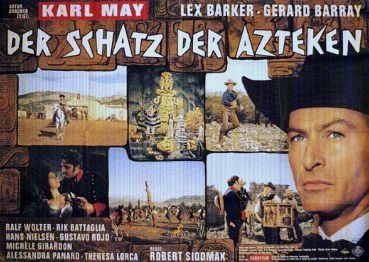
The story starts in Western America and moves into Mexico looking for the lost Aztec Treasure. Lex Barker portrayed "Dr, Karl Steman". The film involves a letter from American President Abraham Lincoln to the future President of Mexico Benito Juarez during the occupation of Mexico by the French.

The second motion picture also starred Lex Barker.in the same role. In this picture, "Die Pyramkde des Sonnengottes (Pyramids of the Sun Gods)". is a direct sequel to the first and was filmed on many of the same sets. "Dr. Karl Steman" has developed a love for Mexico and takes part in their revolution against the French.

I wrote an article about motion pictures set in the American Old West, but made throughout Europe including Germany and Italy. It includes one Western set comedy from of all places the Soviet Union. Should you be interested it can be found at the following link:
http://www.bewaretheblog.com/2015/01/american-westerns-european-style.html
Filmed entirely in Spain, a major location for the genre called "Euro Westerns", was "Custer of the West", The picture starred English actor Robert Shaw as "George Armstrong Custer" and Scottish actress Mary Ure as his wife "Elizabeth Custer".
Director Robert Siodmak and his cinematographer Celilo Panoagua had to deal with the "Cinerama" process. Which meant the film, when shown at theaters that showed movies in "Cinerama", had a visual radius of 180 degrees. The full range of eyesight for the viewer and caused the illusion of motion and being in the actual story.


This version of the story of Custer was entirely fictional, but when you get to the "Battle of the Little Big Horn" at the finale. The Cinerama wide screen was very effective giving the audience the feeling of actually being there, if the story wasn't accurate.

For those of my readers who might be interested in the "Cinerama" process and it's indirect relation to the 1933 movie "King Kong". My article on Adventurer, Movie Maker and U.S. Spy Merian C. Cooper can be read at:
http://www.bewaretheblog.com/2015/10/merian-c-cooper-before-king-kong-to.html
The casting of he main Native American in this picture reflected Hollywood's view toward Ethnic actors. Playing the role of actual Sioux "Chief Dull Knife" was Irish actor Kieron Moore, 1959's Walt Disney's "Darby O'Gill and the Little People" with an unknown Sean Connery, 1961's "Dr. Blood's Coffin" and 1963's "Day of the Triffids",
This trend of using non-Native American actors lasted beyond the 1960's. My article "Native American's Hollywood Style" can be read at:
http://www.bewaretheblog.com/2015/08/native-americans-hollywood-style.html
The final two film's directed by Robert Siodmak, but actually shot as one epic, were "Kampf um Rome (Fight for Rome) Part One released December 17, 1968 and "Kampf um Rome--Der Verrat (Fight for Rome:The Betrayal)" Part Two released February 21, 1969. Both dates are for West Germany. The original Siodmak cut ran 186 minutes divided between Part One and Two. However, a one film version at 93 minutes was released in the United States as "The Last Roman", but not until 1973.
The picture is considered the last "Sword and Sandal" motion picture. The International cast was headed by American Orson Wells as "Emperor Justinian", Yugoslavian actress Sylvia Koscina as "Empress Theodora" and South African actor Lawrence Harvey as "Cethegus".

The International cast also included British actress Honor Blackman as "Amalaswintha", Canadian actor Lang Jeffries as "Bellasarius", Swedish actress Harriet Andersson as "Mathaswintha", American actor Michael Dunn as "Narses" and German actor Klaus Kinski but I couldn't locate the role he played.
In March 1969 Curt Siodmak directed a movie entitled "Ski Fever". Think the "Beach Party Surfers" changed into "Skiers". It starred Martin Milner as "Brian Davis" and Dean Martin's daughter Claudia Martin as "Susan Halsey". The picture was about an American Ski Instructor who disapproves of the "Games of Seduction" his fellow employees are playing. Curt Siodmak was also one of the four writers for the film.
In 1970 David McCallum portrayed "Hillel Mondoro" in a made for television movie based upon Curt Siodmak's novel "Hauser's Memory". Some reviewers think the novel was a reworking of Curt's "Donovan's Brain". It may be about another personality taking over the body of somebody else, but that's about all the connection there is to the two stories.
The story really is about Nazi Germany and the treatment of the Jews. The dying "Hauser" is the only person that knows certain missile defense secrets. The CIA convinces "Hillel Mondoro" to inject himself with the Cerebrospinal fluid from "Hauser's Brain" to transfer those secrets to him. This is done, but with unexpected results.
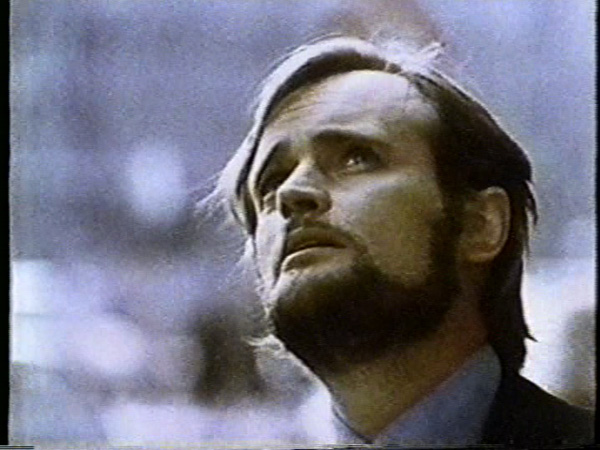
The role is one of the finest performances by David McCallum and the picture was nominated for the 1971 Hugo Award for Presentation. Below McCallum with actress Susan Strasberg as his wife "Karen".
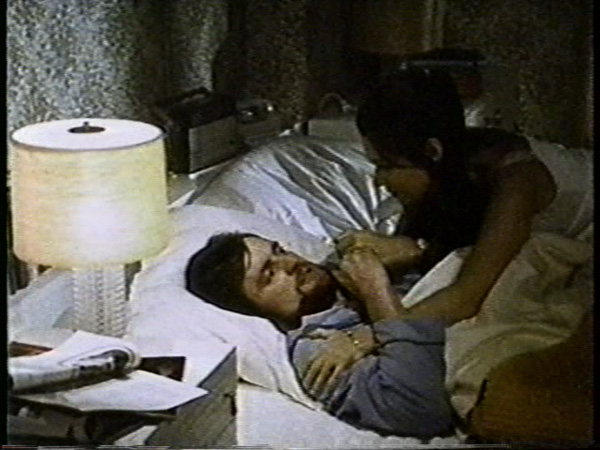
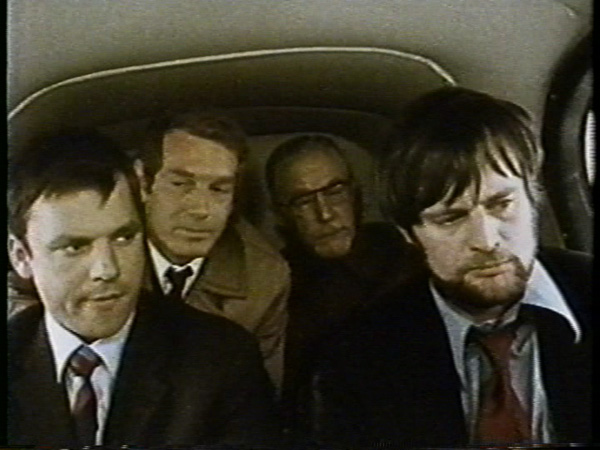
The two minds become conflicted as "Hillel", as his name implies, is not only Jewish but Orthodox and Hauser turns out to have been a Nazi. Add to it that "Hauser's Wife" "Anna", actress Lilli Palmer below, is still "Pro-Nazi" and things become more complicated.
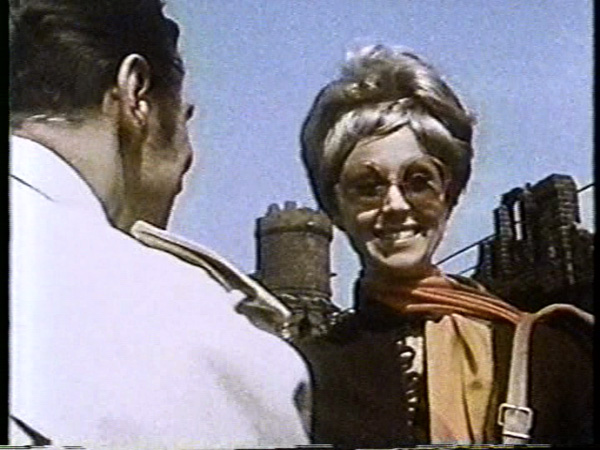
This was the story of two brothers and their impact on the World Wide Motion Picture Industry.
On March 10, 1973 at the age of 72 Robert Siodmak passed away in Ascona Switzerland. On September 2, 2000 at the age 98 brother Curt Siodmak passed away in Three Rivers, California.
I thank both for the enjoyment they gave me and others. Sholom!
As with "The Magnetic Monster" the film was based upon scientific fact and theory for the year produced. From 1955 through 1957 for 78 episodes. Ivan Tors produced "Science Fiction Theater" a television series also revolving around science fact and speculation.
The story for "Riders to the Stars" had a group of subjects that were required to be single males. Who were qualified jet pilots and possibly scientists. This group would be screened for a top secret project. Those chosen were to fly into space, capture a small meteorite and return to base. The purpose was to bring meteorites untouched by the Earth's atmosphere back for study. In the hope of perfecting a covering for deep space rocket exploration.
The movie was directed by Richard Carlson who also played "Dr, Jerome "Jerry" Lockwood". The main star was William Lundigan as "Dr. Richard Donald Stanton". Also in the cast were Martha Hyer as "Dr, Jane Flynn". Herbert Marshall as the project head "Dr. Donald L. Stanton", King Donovan as "James F. O'Herli, Chief of Security" and James Best as "Sidney K., Fuller".

.jpg)
The third film in the trilogy was 1954's "GOG" in 3-D. but neither Siodmak or Carlson were involved. Should my reader be interested in a detail look at Ivan Tors and this trilogy. My article may be read at:
http://www.bewaretheblog.com/2016/07/ivan-tors-office-of-scientific.html
Also my biography on Richard Carlson can be found at:
http://www.bewaretheblog.com/2015/08/richard-carlson-academic-turned-actor.html
Curt Siodmak finished 1954 by writing an episode of the television series "Waterfront" that starred Preston Foster.
Brother Robert was now in France directing motion pictures. On April 12, 1954 the French/Italian co-production ""Le Grand Jeu (The Big Game)" was released in France. The motion picture tells the story of a French Lawyer who falls for a beautiful Italian Girl. They start living beyond their means and eventually he is broke. She leaves him and he joins the French Foreign Legion.
Portraying the girl was Gina Lollobrigida. The film wouldn't arrive in the United States in an English dubbing as "Flesh and the Women" until June 1958.

After that one French film. In 1955 Robert decided to return to his homeland in what was now West Germany to make motion pictures. His first feature was "Die Ratten (The Rats)", July 6, 1955. The movie, which never came to the United States, is a drama set in the horror German's faced after the Second World War ended.
The story tells of a young women, "Pauline Karka", forced to sell her baby for money to survive. The role of "Brund Mechelke" was portrayed by Curd (Curt) Jurgens.
While in the United States brother Curt, on February 28, 1955, saw his novel "Donovan's Brain" adapted to television on the anthology series "Studio One Hollywood"starring Wendell Corey as "Dr Cory" and E.G. Marshall as "Dr. Shratt". He also wrote a program for another anthology show "The Pepsi-Cola Playhouse" and made a 26 minute pilot for a proposed science fiction show entitled "Captain Fathom". The series was not picked up.

Above, "Captain Fathom", Don Megowan, second on the right,and his submarine crew discover an atomic bomb on the ocean floor. They must disarm it, before the enemy appears to stop them.
Also in the cast was Kenneth Tobey who was in another submarine picture in 1955 "It Came From Beneath the Sea". My article about Tobey, my neighbor when I was 8 to 11 years of age, can be read at:
http://www.bewaretheblog.com/2016/10/a-memory-of-my-neighbors-barbara-luddy.html
Curt did come up with the original story and write the screenplay for a motion picture produced by Sam Katzman for Columbia Pictures and starring Richard Denning.
"Creature with the Atom Brain", July 1, 1955, told the story of a mobster getting even with the men who sent him to prison. He teams up with an ex-Nazi Scientist to put electronically controlled brains into the reanimated corpse's of dead men. He watches what they see on a television screen. As well as talk in his own voice to his victims. Richard Denning was Los Angeles Police Criminologist "Dr. Chet Waker".

In 1956 Curt Siodmak met with another Columbia Pictures Producer Charles H. Schneer with an idea for a motion picture based upon Air Force Major Donald E. Keyhoe's book "Flying Saucers from Outer Space". The result was the Ray Harryhausen classic "Earth vs the Flying Saucers" released on July 1, 1956. Screenplay writer George Worthing Yates adapted Curt's story.

I saw the picture the first weekend it opened on a double bill with a forgotten, but excellent horror tale "The Werewolf". Starting with "It Came from Beneath the Sea" Charles H. Schneer was stop motion animated Ray Harryhausens friend and business partner, but most people do not associate his name with the movies the two made. The following link will take my reader to my biography on the producer.
http://www.bewaretheblog.com/2016/09/charles-h-schneer-look-at-work-of.html
After creating the story for "Earth vs the Flying Saucers". Curt Siodmak wrote an episode of the television series "The Count of Monte Cristo" and both the story and screenplay for the movie "Curcucu, the Beast of the Amazon" released in December, 1956.

Don't let the title and poster fool you. The picture also directed by Curt Siomak is actually a typical Jungle adventure film. John Bromfield is plantation owner, "Rock Dean" living along the Amazon River. Beverly Garland is "Dr. Andrea Romar" searching for a native drug that she believes will reduce the size of cancerous tissue. Apparently the drug is used to shrink heads.
The two go in search of "Rock's" plantation workers who have mysteriously left one night. They will meet the legendary "Curcucu" who is responsible for the workers disappearance.


Bromfield and Garland are accompanies by their guide "Tumpanico", Tom Paine.

"Curcucu" turns out to be "Tumpanico". Who wants to lead his people away from the plantation and back to the old ways under his leadership.
When the final cut was completed. Curt Siodmak discovered he had over 10,000 feet of unused footage. So he wrote and directed "Love Slaves of the Amazon" released a year later. The film tells of an archaeologist "Dr Peter Masters", Don Taylor, who discovers a lost tribe of Amazons.


During this period Robert continued to make German motion pictures including the Academy Award nominated Best Foreign Language Film "Nachts, wenn der Teufel kam (At Night, When the Devil Came)". It was released in West Germany on September 19, 1957 and in the United States in an English dub as "The Devil Strikes at Night" on January 29, 1959.

This film noir thriller was based upon the true story of serial killer Bruno Ludke. The story takes place during the final two years of World War 2 with the "Wrong Man" being arrested and a police officer tracking down the real killer.

While Curt was making "Love Slaves of the Amazon" his brother Robert worked on the first of four episodes of the British television series "O.S.S. (Office of Strategic Service)". This work would take him into 1958. The series only ran for one season of 26 episodes. As it did not catch on in either the U.K. of the United States. So he returned to West Germany to make a motion picture. The film was about a clergy man's daughter who might have murdered the man she was force to marry after becoming pregnant.
"Tales of Frankenstein" was an unsold pilot written and directed by Curt Siodmak in 1958. The project was a co-production of Columbia Pictures and Hammer Films.
The joint American/British co-operation showed in the casting. Portraying "Baron Frankenstein" was German born Hammer character actor Anton Diffring. Who had just appeared in Robert Siodmak's "O.S.S." directed "Operation Eel" and the following year would be Hammer Films "The Man Who Cheated Death".

Portraying the very Universal Studio's looking "Monster" was actor Don Megowan. He had portrayed the non-screen credited land version of "The Creature from the Black Lagoon" in 1956's "The Creature Walks Among Us", but had already been seen as "Colonel Travis" in the Alamo segment of Walt Disney's "Davy Crockett". As well as the "Sheriff" in my previously mentioned 1956 movie "The Werewolf" and "Captain Fathom" in Curt's unsold pilot.

In 1959 Curt Siodmak originated the television series "13 Demon Street". He wrote and directed four of the 25 minute long episodes himself. The series, which only ran for 13 programs, was hosted by Lon Chaney. What made it even more interesting was the production was Swedish, but spoken in England and it never played in the United States. You can find the series on DVD.
.jpg)
Another interesting fact was Lon went back to being called Lon Chaney, Jr. for this program.
.jpg)
On October 23, 1962 a movie starring Lon Chaney was released in the United States. "The Devil's Messenger" is actually three of the programs from "13 Demon Street" edited into a feature film.


14 days earlier in West Germany a British/German co-production "The Brain" was released. This was the third feature film based upon Curt Siodmak's "Donovan's Brain". The actual title for the picture was "Ein Toter sucht seinen Morder ( A Dead Man Seeks His Murder)" and that was the twist on Curt's original novel. The brain being kept alive uses the scientist "Dr. Peter Corrie", played by Peter van Eyck, to track down his murderer. British actress Anne Heywood actually was the star portraying "Anna Holt". The movie finally came to the United States in 1964.


Staying in October of 1962. On the 22nd in West Berlin was the premier of a United States/West Germany co-production directed by Robert Siodmak. The movie was "Escape from East Berlin" aka" "Tunnel 28".
Today with a united Germany most of my readers may not know, as I remember, that the city of Berlin was split into two. The East was under Soviet rule and to stop people escaping to the free West. The Soviet Union built a Wall. While West Berlin was under Allied Occupation.
On January 28, 1962 an actual escape took place to the freedom of the West side of the city through a tunnel constructed under "The Wall". Robert Siodmak's motion picture was based upon that story. The motion picture starred American Don Murray as "Kurt Schrodder" and German actreess Christine Kaufmann as "Erika Jurgens". At the time Kaufmann was married to American actor Tony Curtis.

Released in West Germany on November 30, 1962 was "Sherlock Holmes und das Haisbland des Todses (Sherlock Holmes and the Collar of Death)" aka: "Sherlock Holmes and the Deadly Necklace". The motion picture was a co-production of West Germany, Italy and France with a story and screenplay by Curt Siodmak. The film was shot in four languages German, French, Italian and English. The actor portraying "Sherlock Holmes" fluently spoke each. He was Christopher Lee and British actor Thorley Walters was "Dr. Watson".
The plot revolves around a search for Cleopatra's necklace. The movie didn't reach the UK until 1968 and went directly to television in the United States the same year, Also in the cast were Austrian actress Senta Berger as "Ellen Blackburn" and German actor Hans Sohnker as "Professor Moriarty".
Christopher Lee made several European motion pictures in which he spoke his lines in the language the movie was shot in. "Sherlock Holmes and the Deadly Necklace" is the only such film to contain his actual voice in the English version. Should my reader be interested in this stage of the actor career. My article on it can be found at:
http://www.bewaretheblog.com/2016/10/a-memory-of-my-neighbors-barbara-luddy.html
In 1965 Curt's "Captain Fathom" finally came to the television screen as 18 thirty minute animated cartoons. "Captain Fathom" and the crew of his submarine the Argonaut become involved with different adventures.

Karl May was a German author mainly of novels set in the American Old West. The closest May ever got to the real West was a visit to the United States and Niagara Falls. What may seem strange to my American readers. Karl May still remains the most prolific author of American Westerns. He passed away on March 30, 1912. His novels were made into a large amount of West German Westerns during the 1960's and actually out did the Italians of the same period in production. Although very few were dubbed into English. Most of these co-starred either American actor Lex Barker, or English actor Stewart Granger.
Robert Siodmak directed two of these Karl May West German/French/Italian co-productions based upon the same character. The first was released March 4, 1965 in West Germany, August 3, 1966 in Italy and March 30, 1967 in France. The title was "Der Schatz der Azreken (The Treasure of the Aztecs)".

The story starts in Western America and moves into Mexico looking for the lost Aztec Treasure. Lex Barker portrayed "Dr, Karl Steman". The film involves a letter from American President Abraham Lincoln to the future President of Mexico Benito Juarez during the occupation of Mexico by the French.

The second motion picture also starred Lex Barker.in the same role. In this picture, "Die Pyramkde des Sonnengottes (Pyramids of the Sun Gods)". is a direct sequel to the first and was filmed on many of the same sets. "Dr. Karl Steman" has developed a love for Mexico and takes part in their revolution against the French.

I wrote an article about motion pictures set in the American Old West, but made throughout Europe including Germany and Italy. It includes one Western set comedy from of all places the Soviet Union. Should you be interested it can be found at the following link:
http://www.bewaretheblog.com/2015/01/american-westerns-european-style.html
Filmed entirely in Spain, a major location for the genre called "Euro Westerns", was "Custer of the West", The picture starred English actor Robert Shaw as "George Armstrong Custer" and Scottish actress Mary Ure as his wife "Elizabeth Custer".
Director Robert Siodmak and his cinematographer Celilo Panoagua had to deal with the "Cinerama" process. Which meant the film, when shown at theaters that showed movies in "Cinerama", had a visual radius of 180 degrees. The full range of eyesight for the viewer and caused the illusion of motion and being in the actual story.


This version of the story of Custer was entirely fictional, but when you get to the "Battle of the Little Big Horn" at the finale. The Cinerama wide screen was very effective giving the audience the feeling of actually being there, if the story wasn't accurate.

For those of my readers who might be interested in the "Cinerama" process and it's indirect relation to the 1933 movie "King Kong". My article on Adventurer, Movie Maker and U.S. Spy Merian C. Cooper can be read at:
http://www.bewaretheblog.com/2015/10/merian-c-cooper-before-king-kong-to.html
The casting of he main Native American in this picture reflected Hollywood's view toward Ethnic actors. Playing the role of actual Sioux "Chief Dull Knife" was Irish actor Kieron Moore, 1959's Walt Disney's "Darby O'Gill and the Little People" with an unknown Sean Connery, 1961's "Dr. Blood's Coffin" and 1963's "Day of the Triffids",
This trend of using non-Native American actors lasted beyond the 1960's. My article "Native American's Hollywood Style" can be read at:
http://www.bewaretheblog.com/2015/08/native-americans-hollywood-style.html
The final two film's directed by Robert Siodmak, but actually shot as one epic, were "Kampf um Rome (Fight for Rome) Part One released December 17, 1968 and "Kampf um Rome--Der Verrat (Fight for Rome:The Betrayal)" Part Two released February 21, 1969. Both dates are for West Germany. The original Siodmak cut ran 186 minutes divided between Part One and Two. However, a one film version at 93 minutes was released in the United States as "The Last Roman", but not until 1973.
The picture is considered the last "Sword and Sandal" motion picture. The International cast was headed by American Orson Wells as "Emperor Justinian", Yugoslavian actress Sylvia Koscina as "Empress Theodora" and South African actor Lawrence Harvey as "Cethegus".

The International cast also included British actress Honor Blackman as "Amalaswintha", Canadian actor Lang Jeffries as "Bellasarius", Swedish actress Harriet Andersson as "Mathaswintha", American actor Michael Dunn as "Narses" and German actor Klaus Kinski but I couldn't locate the role he played.
In March 1969 Curt Siodmak directed a movie entitled "Ski Fever". Think the "Beach Party Surfers" changed into "Skiers". It starred Martin Milner as "Brian Davis" and Dean Martin's daughter Claudia Martin as "Susan Halsey". The picture was about an American Ski Instructor who disapproves of the "Games of Seduction" his fellow employees are playing. Curt Siodmak was also one of the four writers for the film.
In 1970 David McCallum portrayed "Hillel Mondoro" in a made for television movie based upon Curt Siodmak's novel "Hauser's Memory". Some reviewers think the novel was a reworking of Curt's "Donovan's Brain". It may be about another personality taking over the body of somebody else, but that's about all the connection there is to the two stories.
The story really is about Nazi Germany and the treatment of the Jews. The dying "Hauser" is the only person that knows certain missile defense secrets. The CIA convinces "Hillel Mondoro" to inject himself with the Cerebrospinal fluid from "Hauser's Brain" to transfer those secrets to him. This is done, but with unexpected results.

The role is one of the finest performances by David McCallum and the picture was nominated for the 1971 Hugo Award for Presentation. Below McCallum with actress Susan Strasberg as his wife "Karen".


The two minds become conflicted as "Hillel", as his name implies, is not only Jewish but Orthodox and Hauser turns out to have been a Nazi. Add to it that "Hauser's Wife" "Anna", actress Lilli Palmer below, is still "Pro-Nazi" and things become more complicated.

This was the story of two brothers and their impact on the World Wide Motion Picture Industry.
On March 10, 1973 at the age of 72 Robert Siodmak passed away in Ascona Switzerland. On September 2, 2000 at the age 98 brother Curt Siodmak passed away in Three Rivers, California.
I thank both for the enjoyment they gave me and others. Sholom!









No comments:
Post a Comment